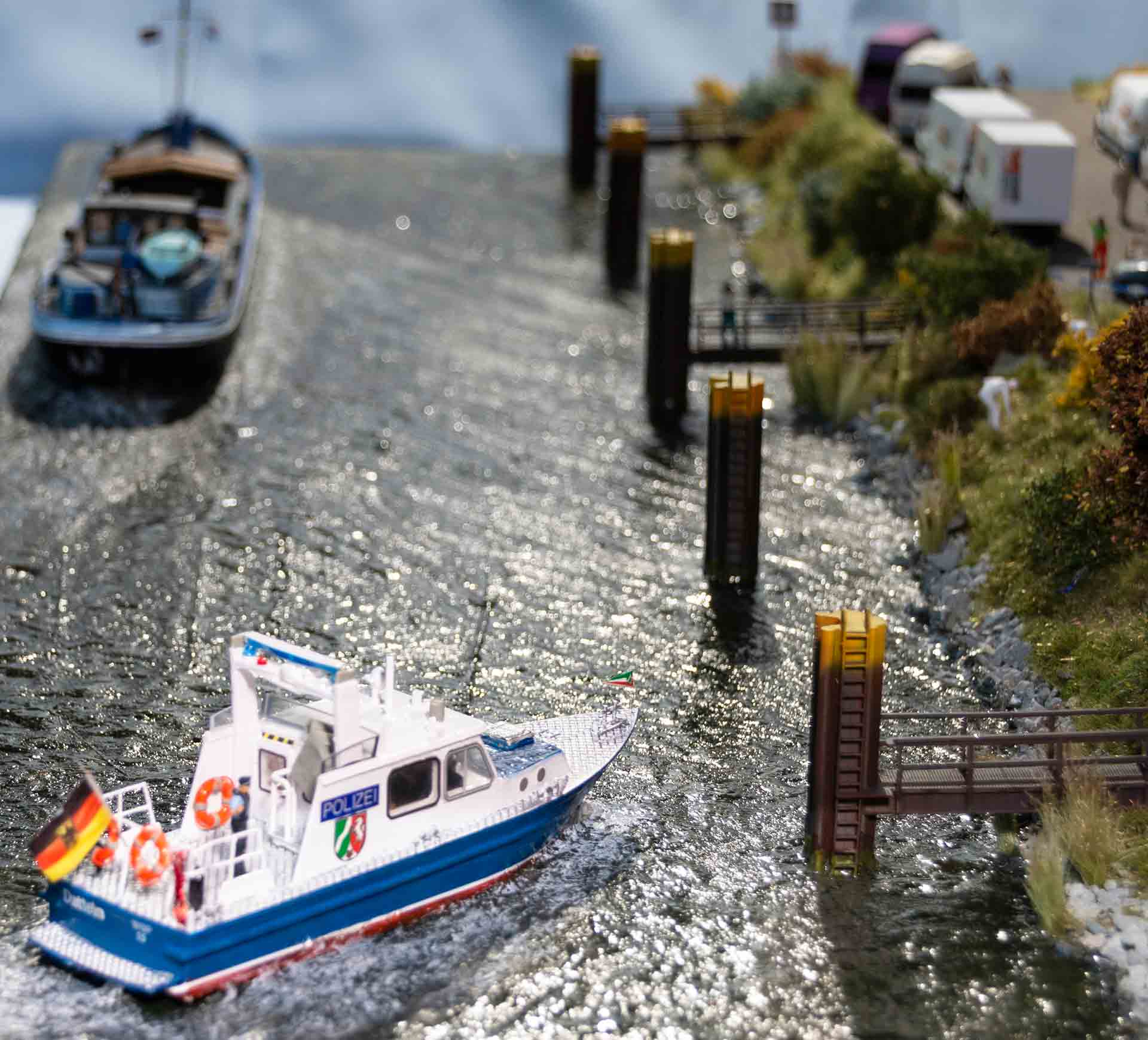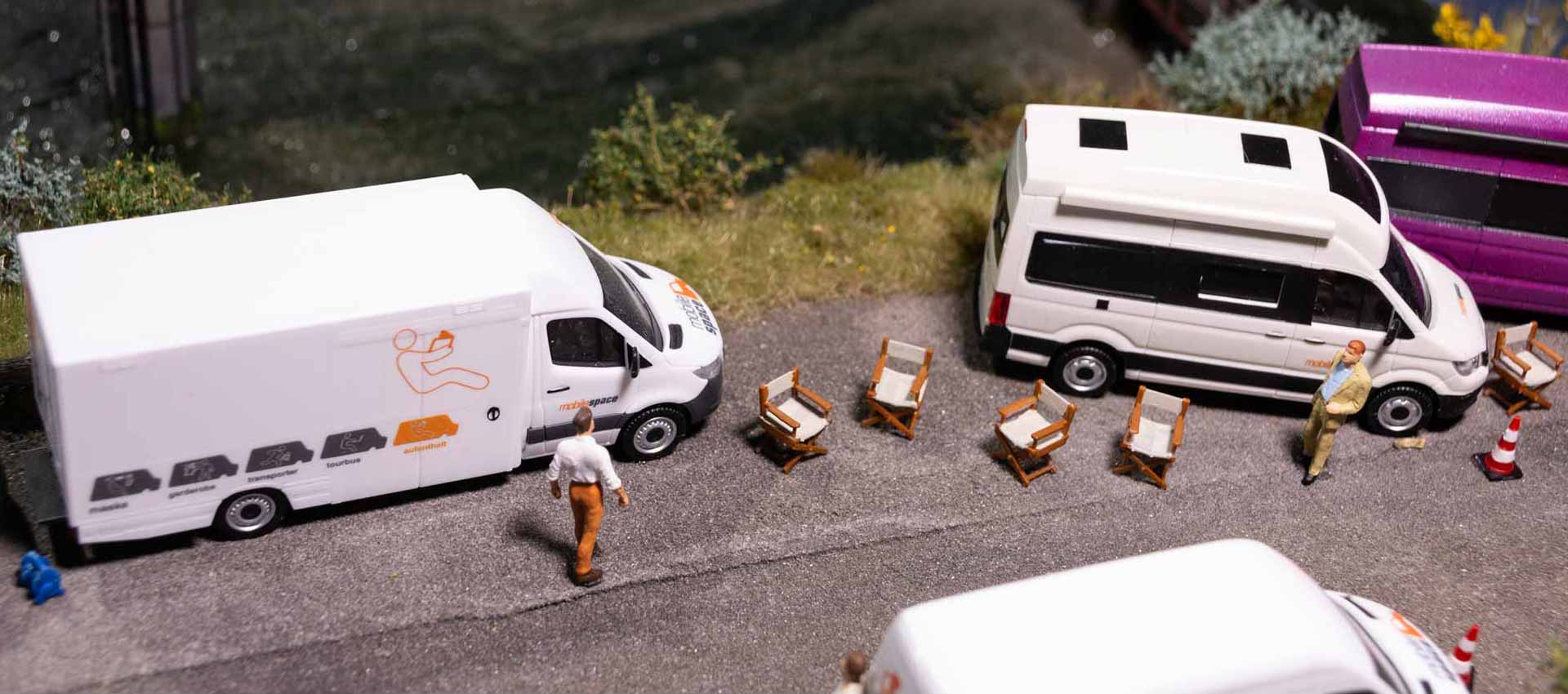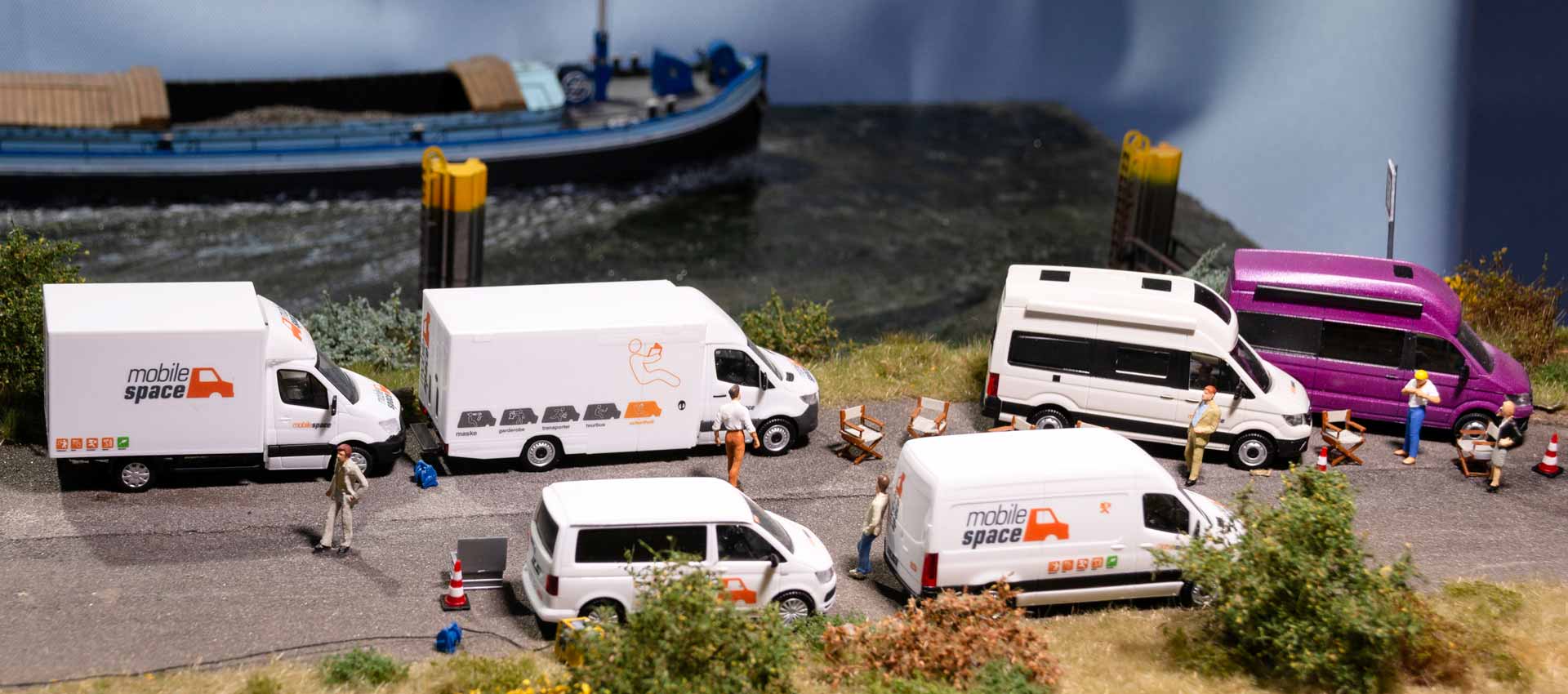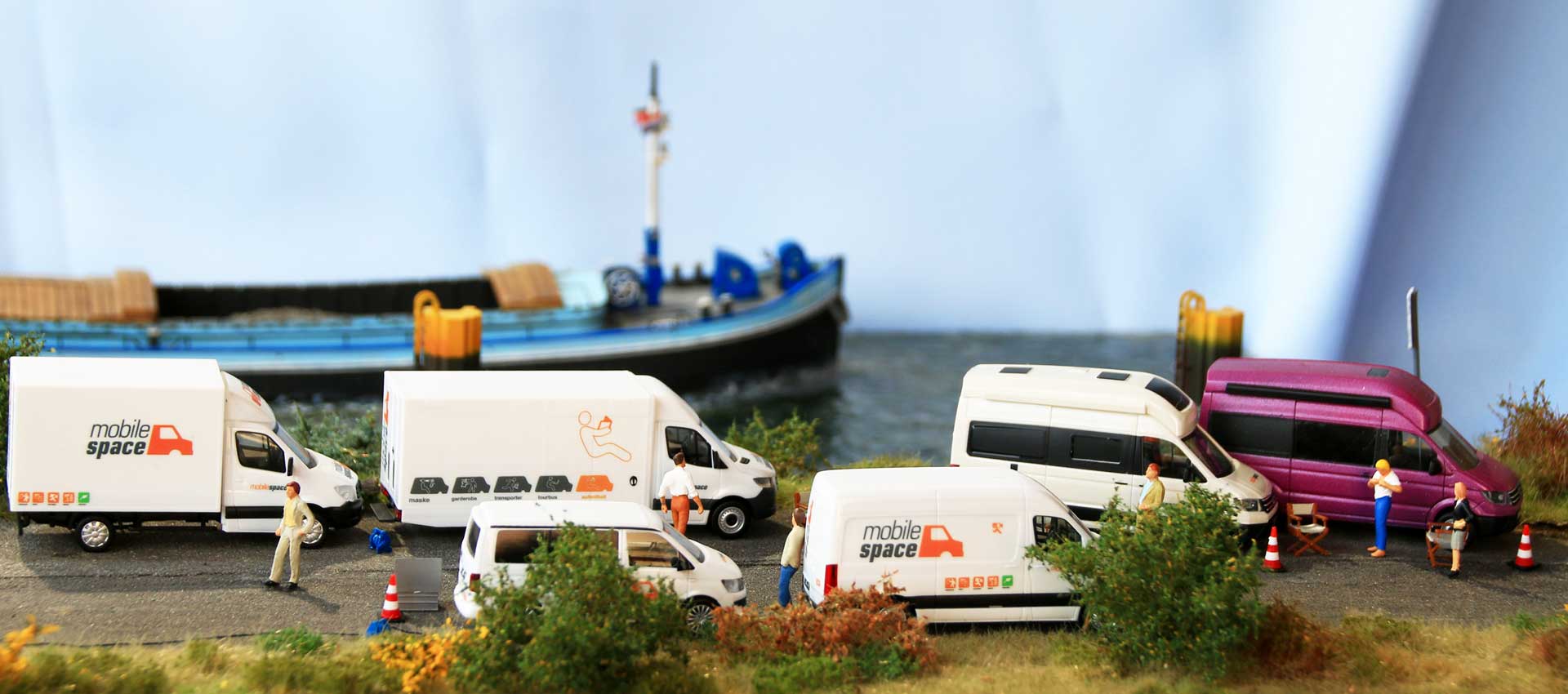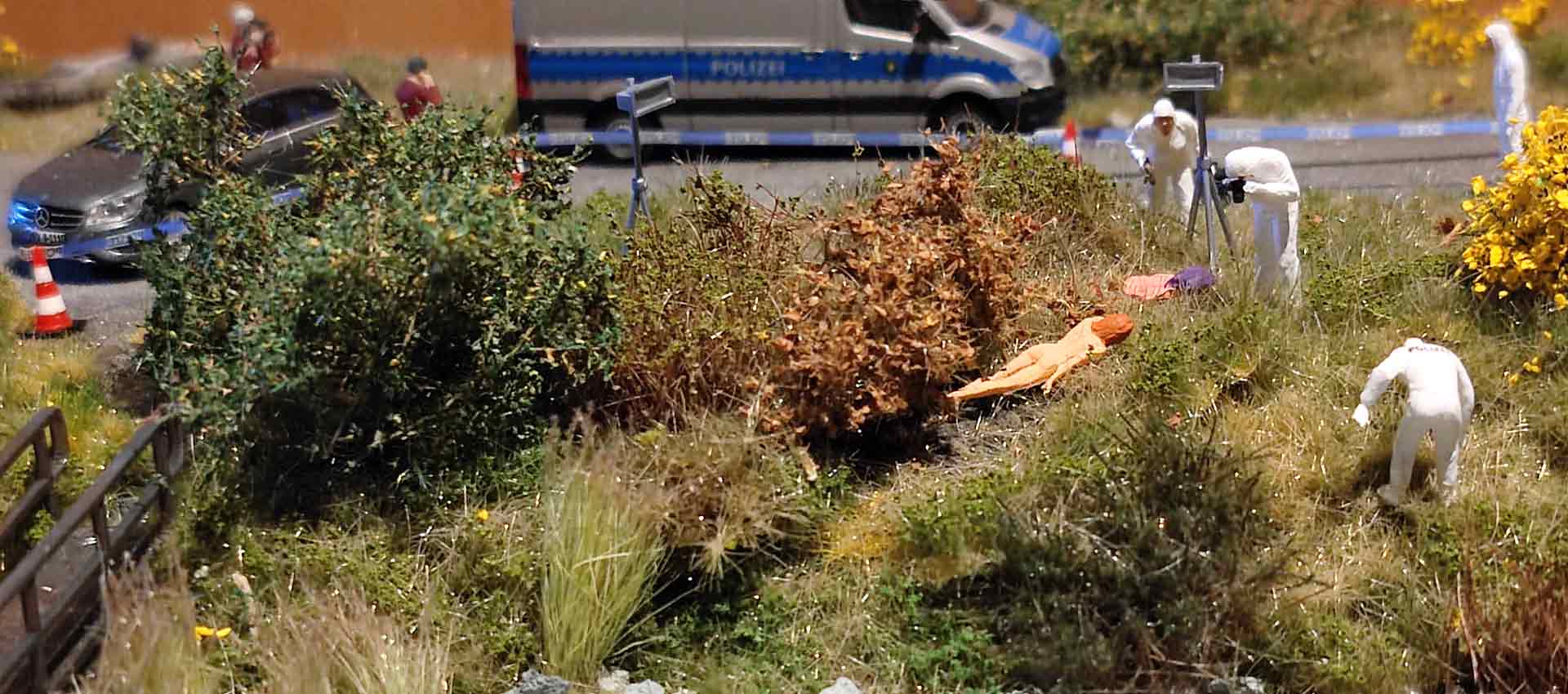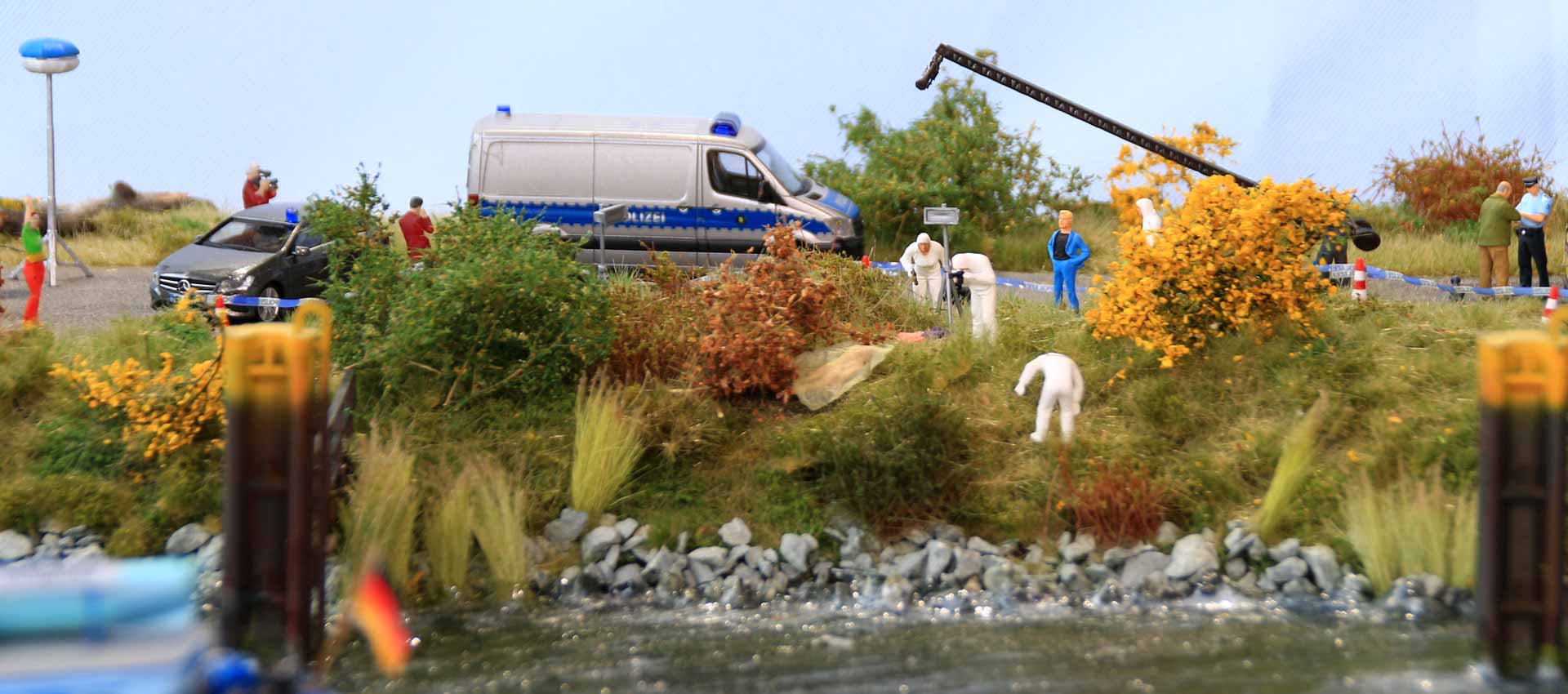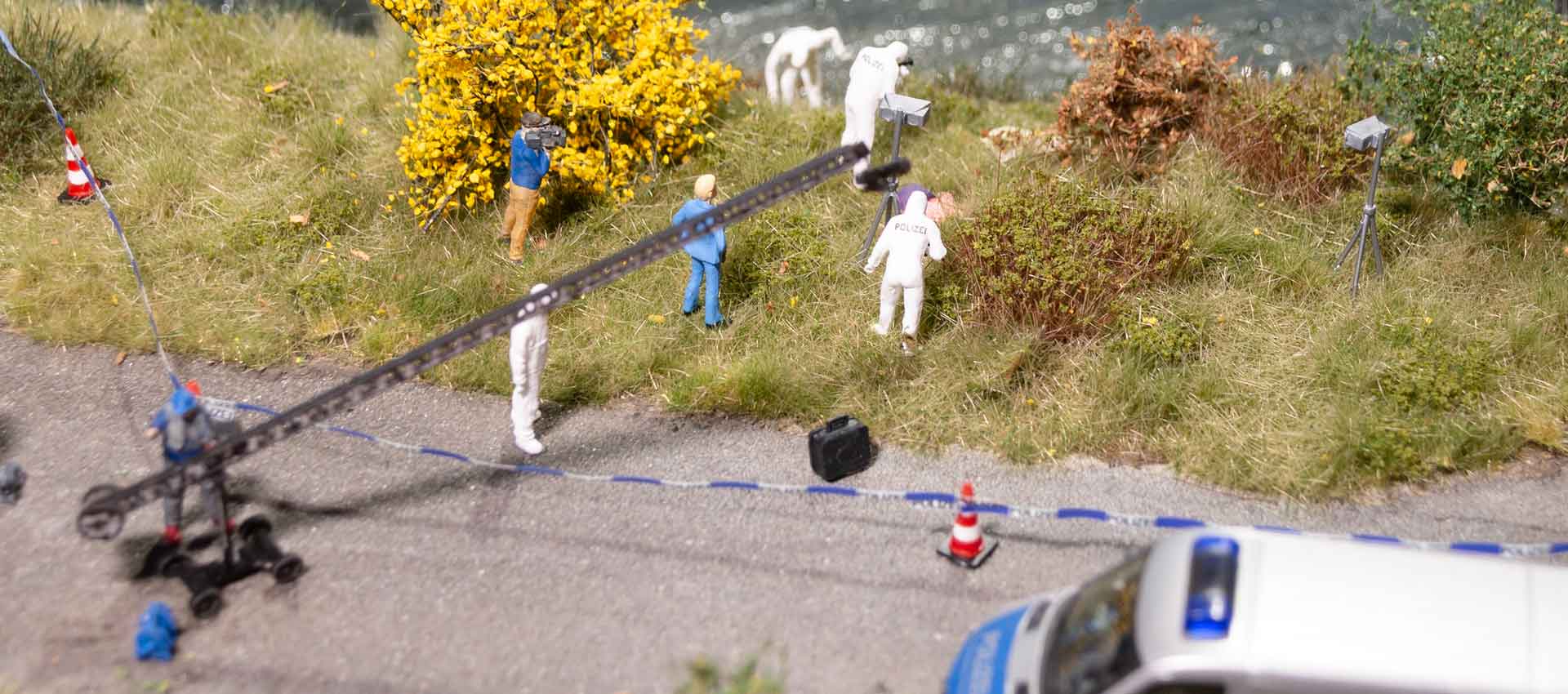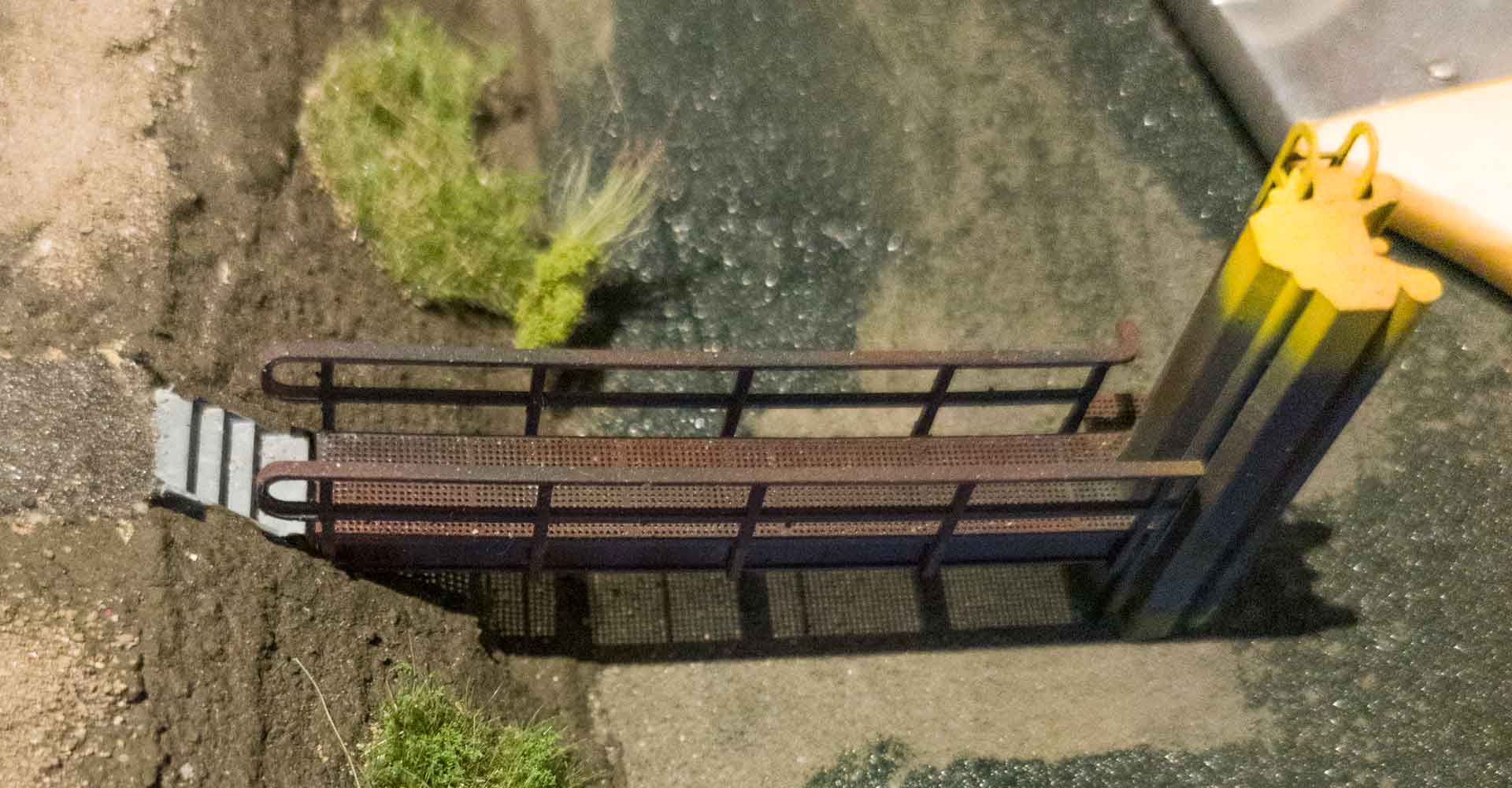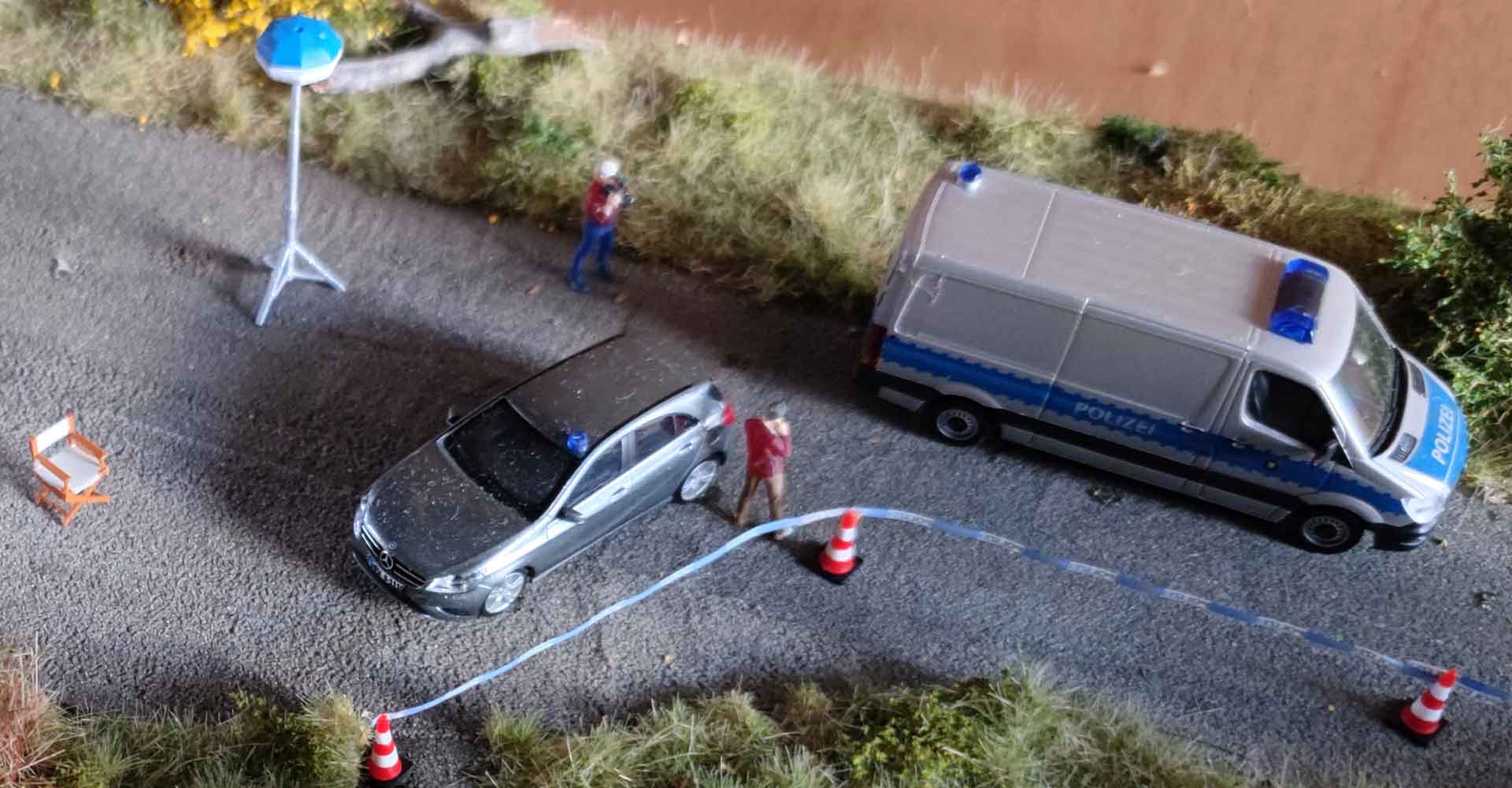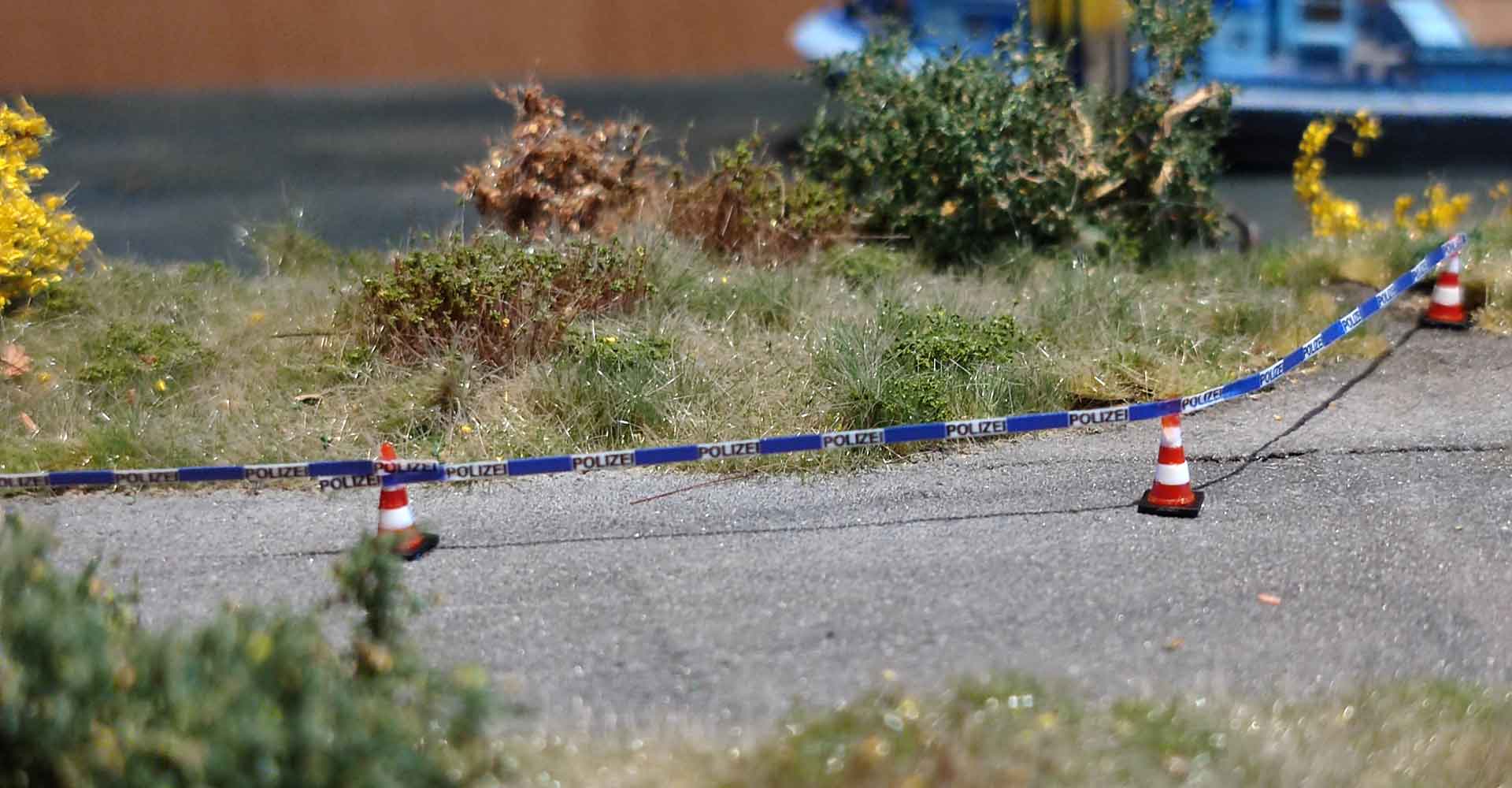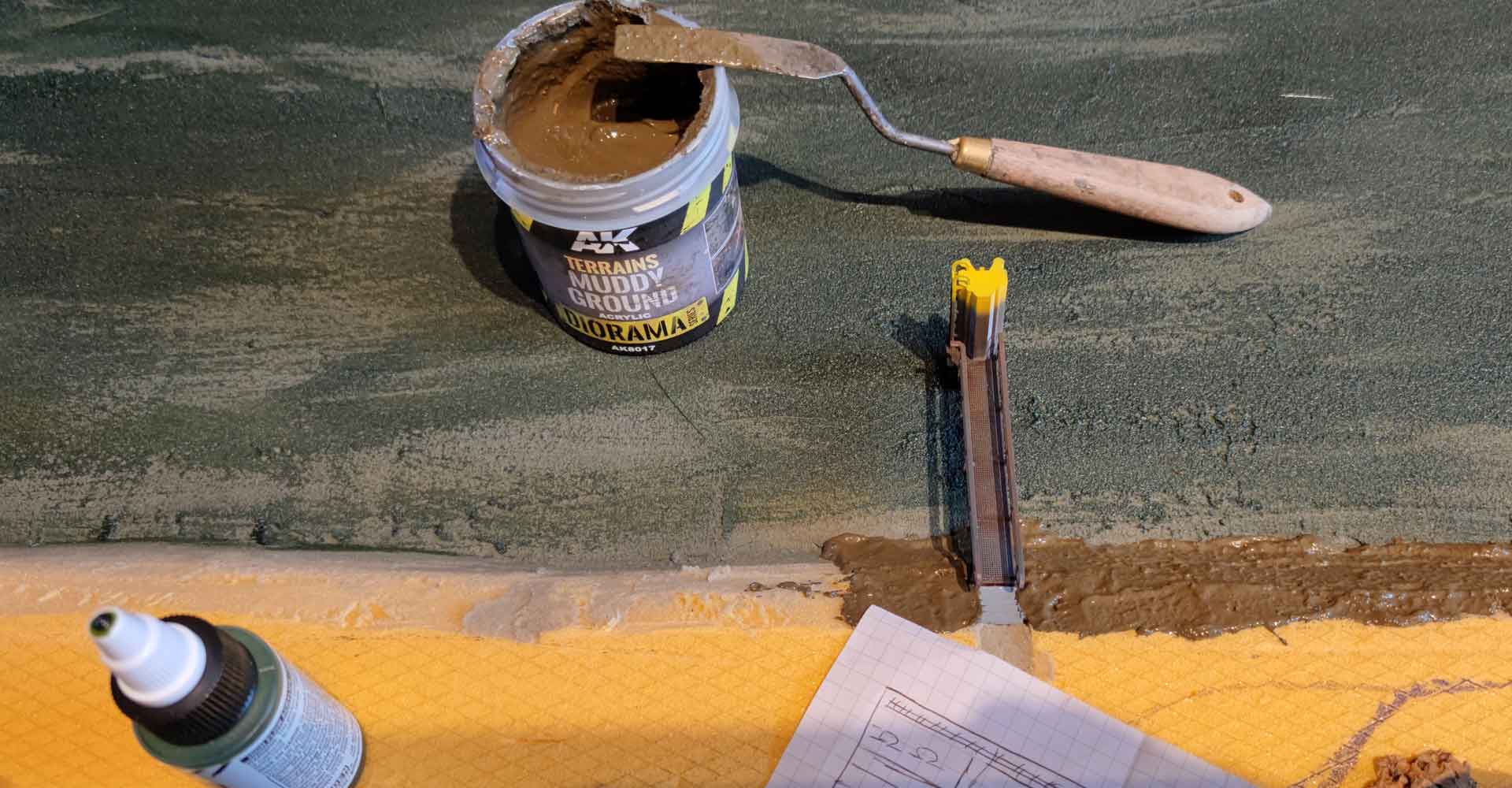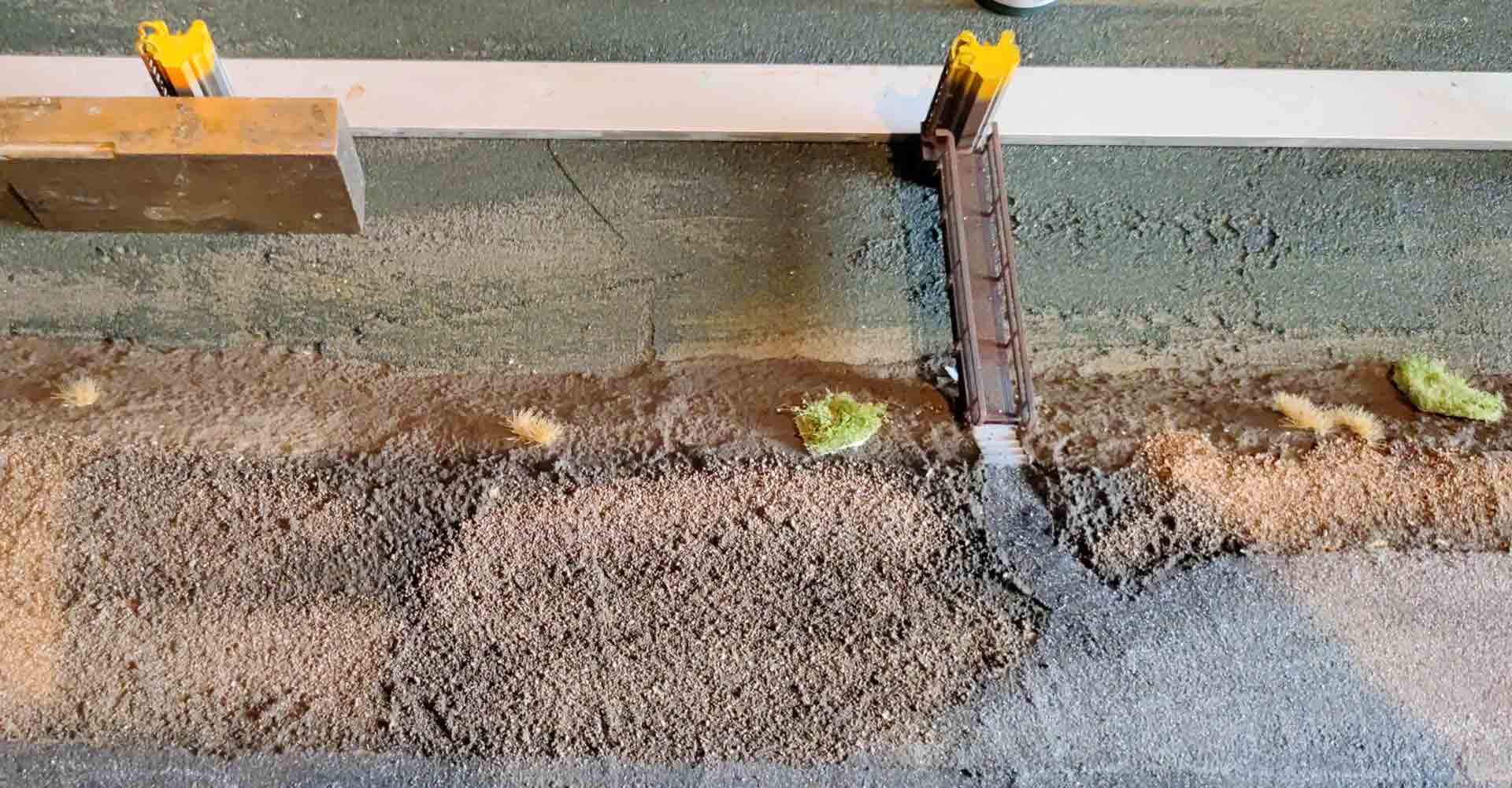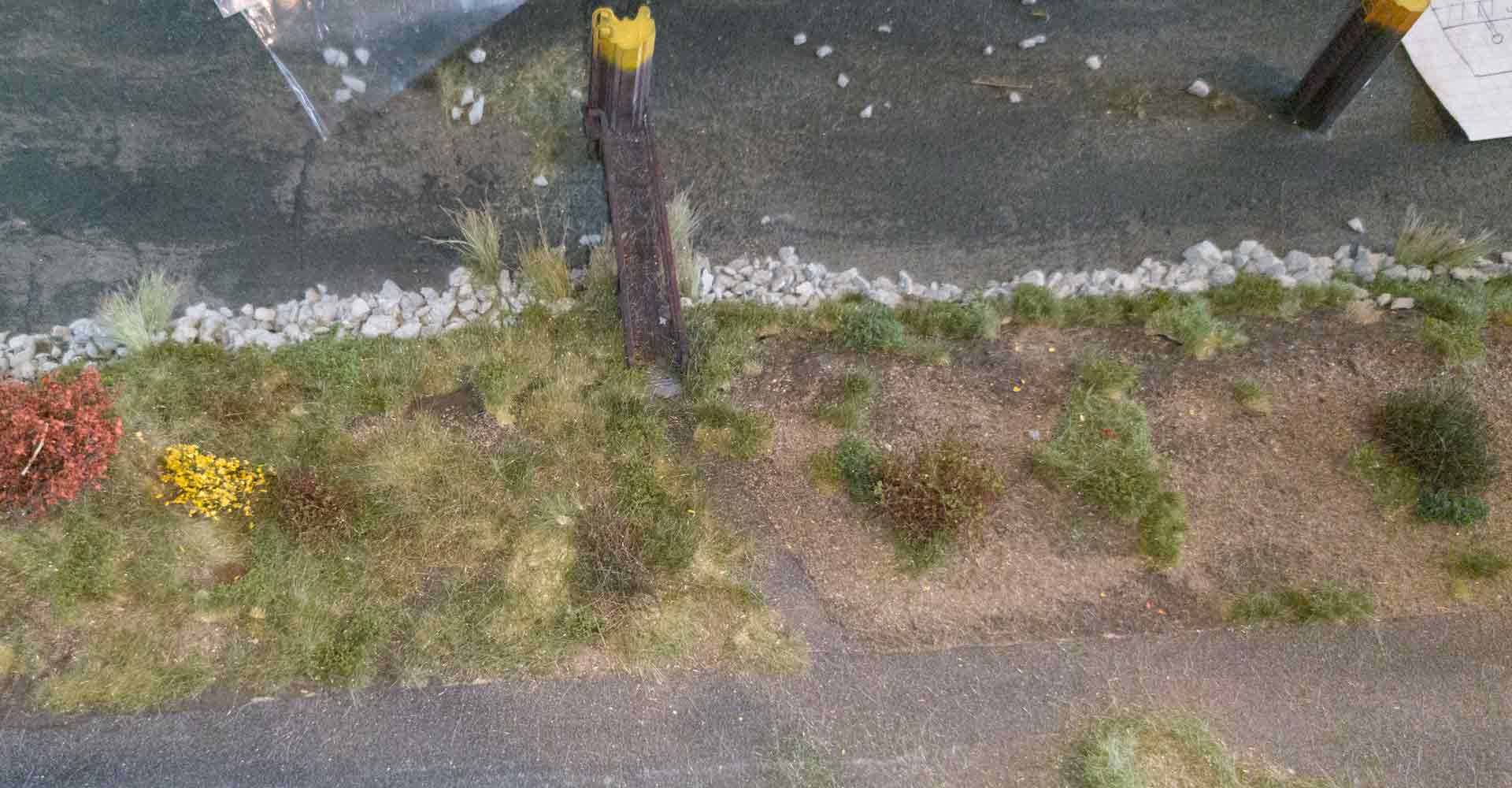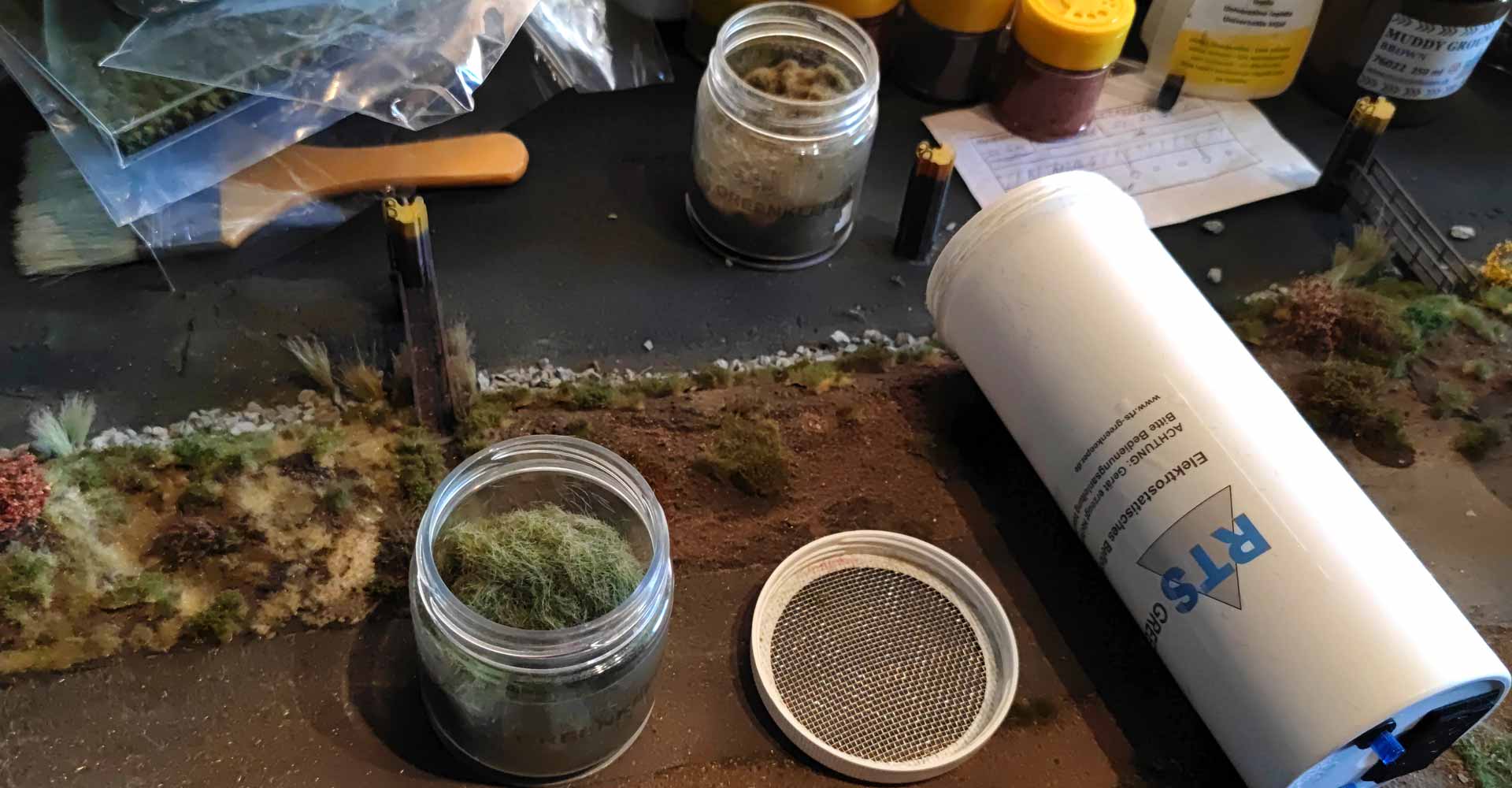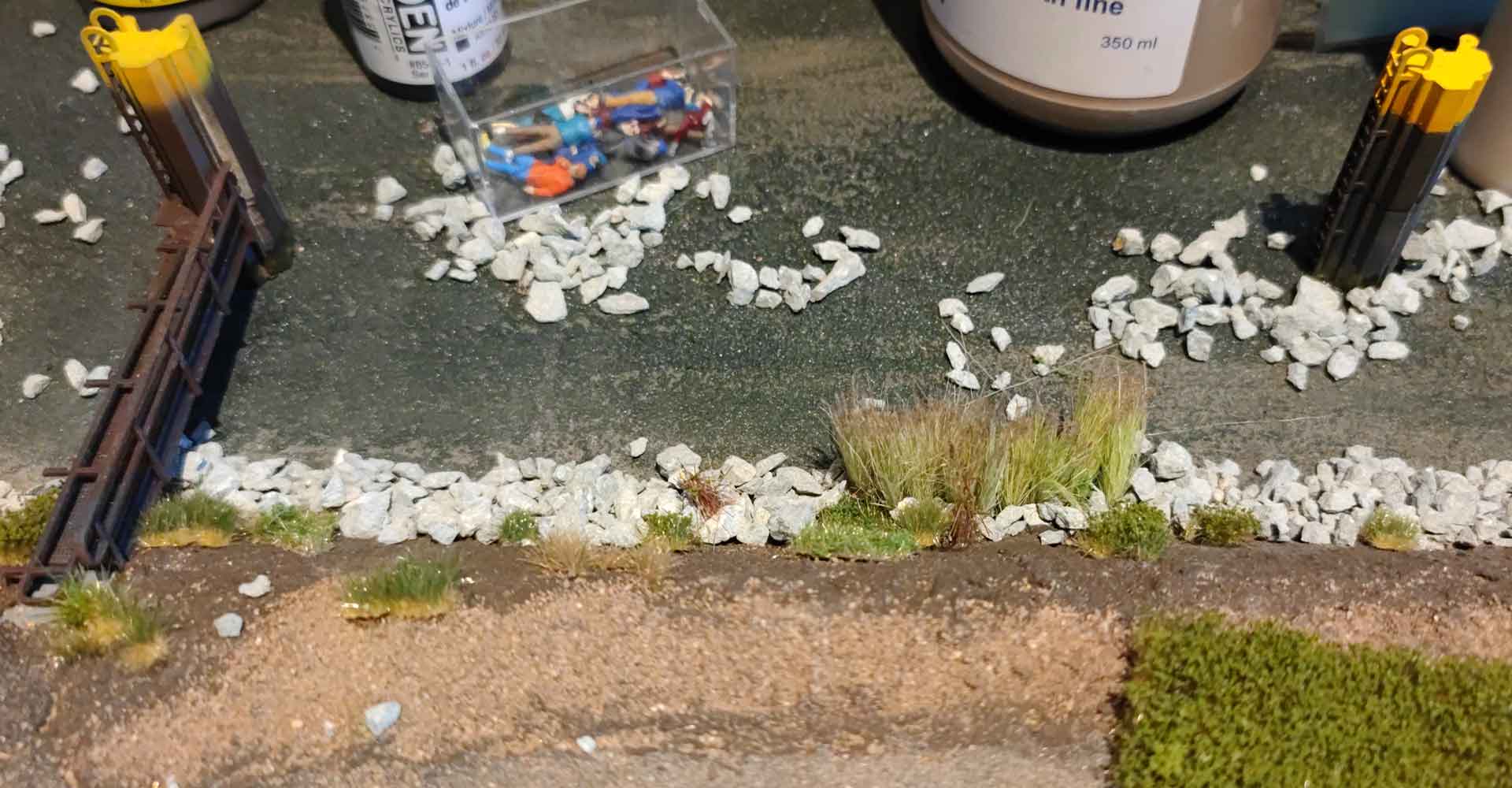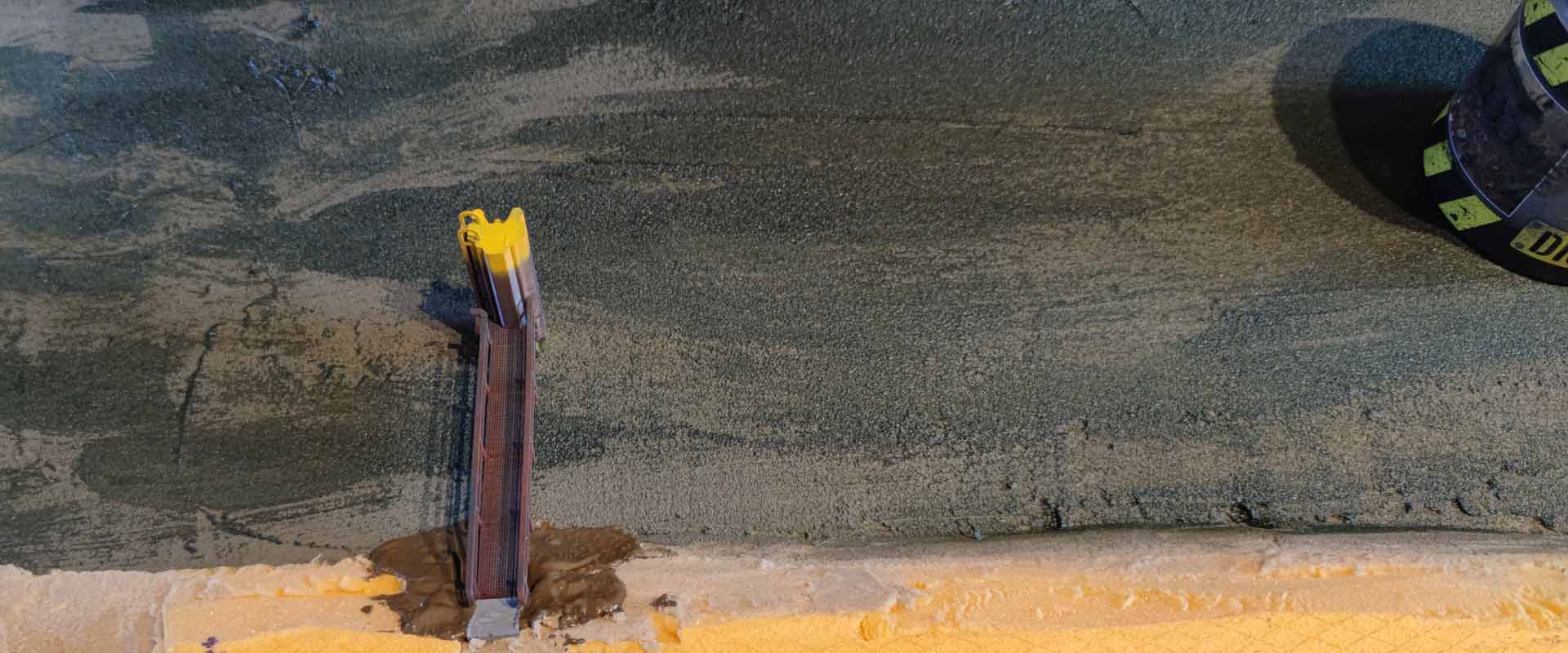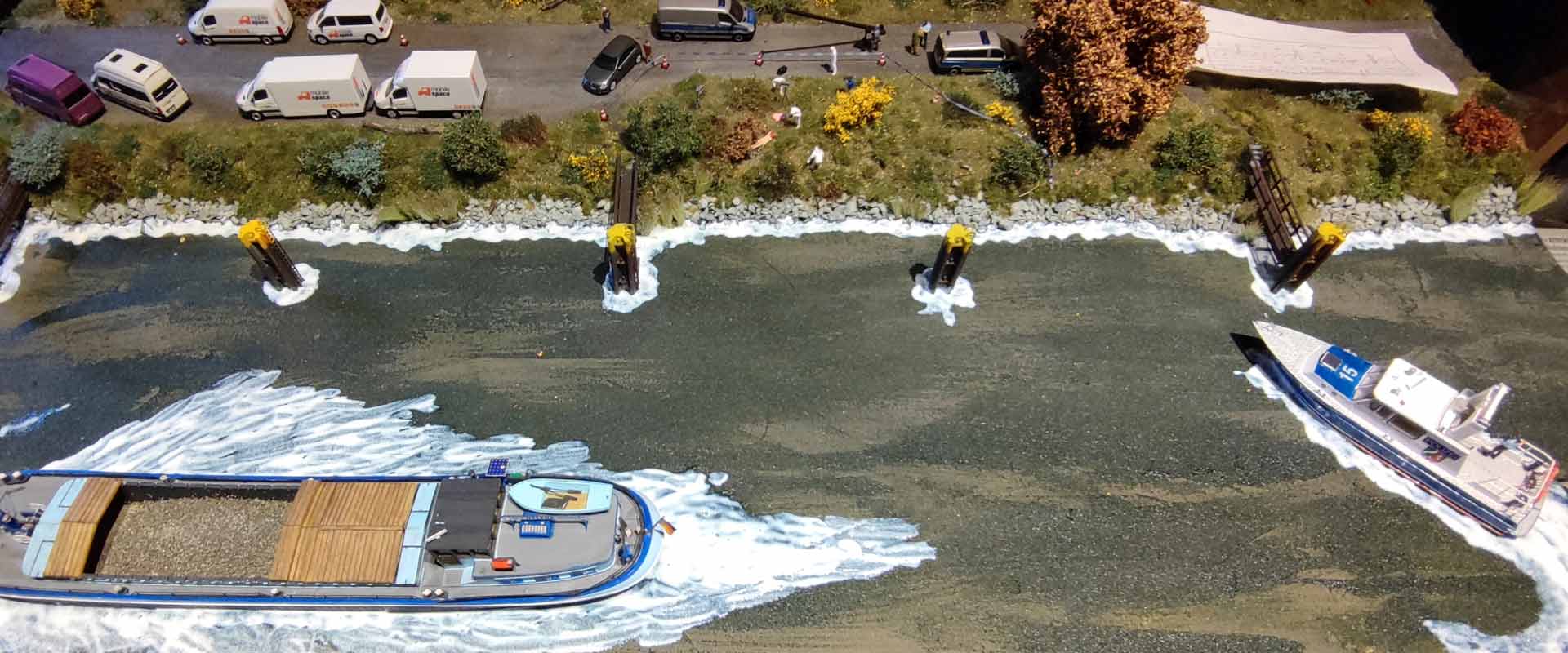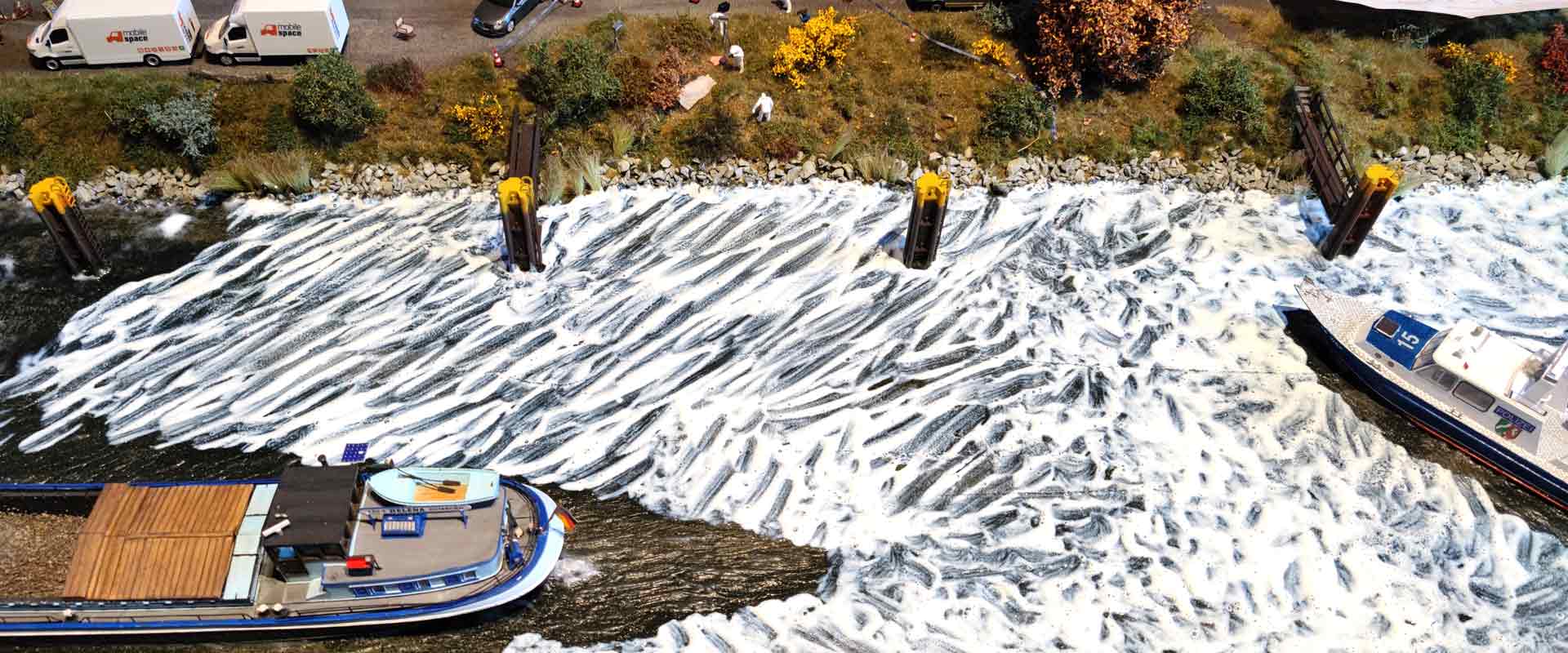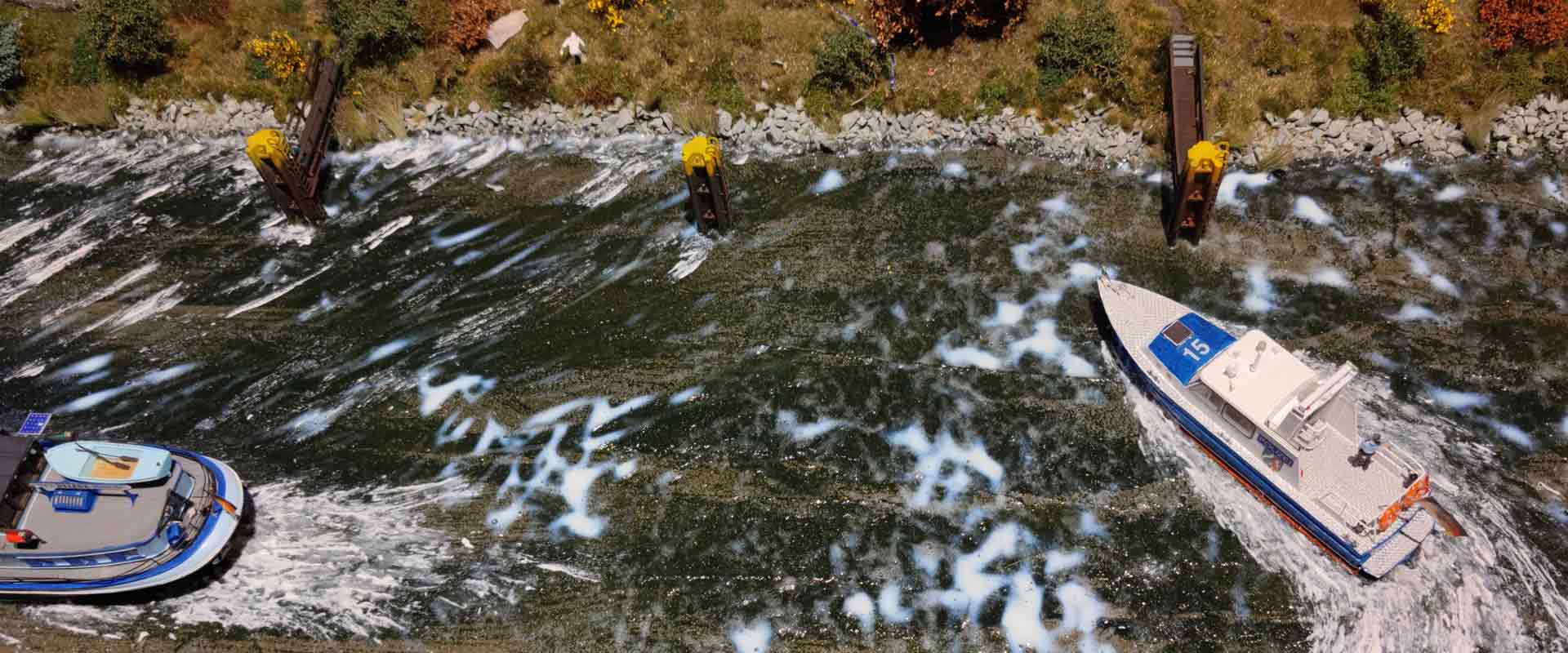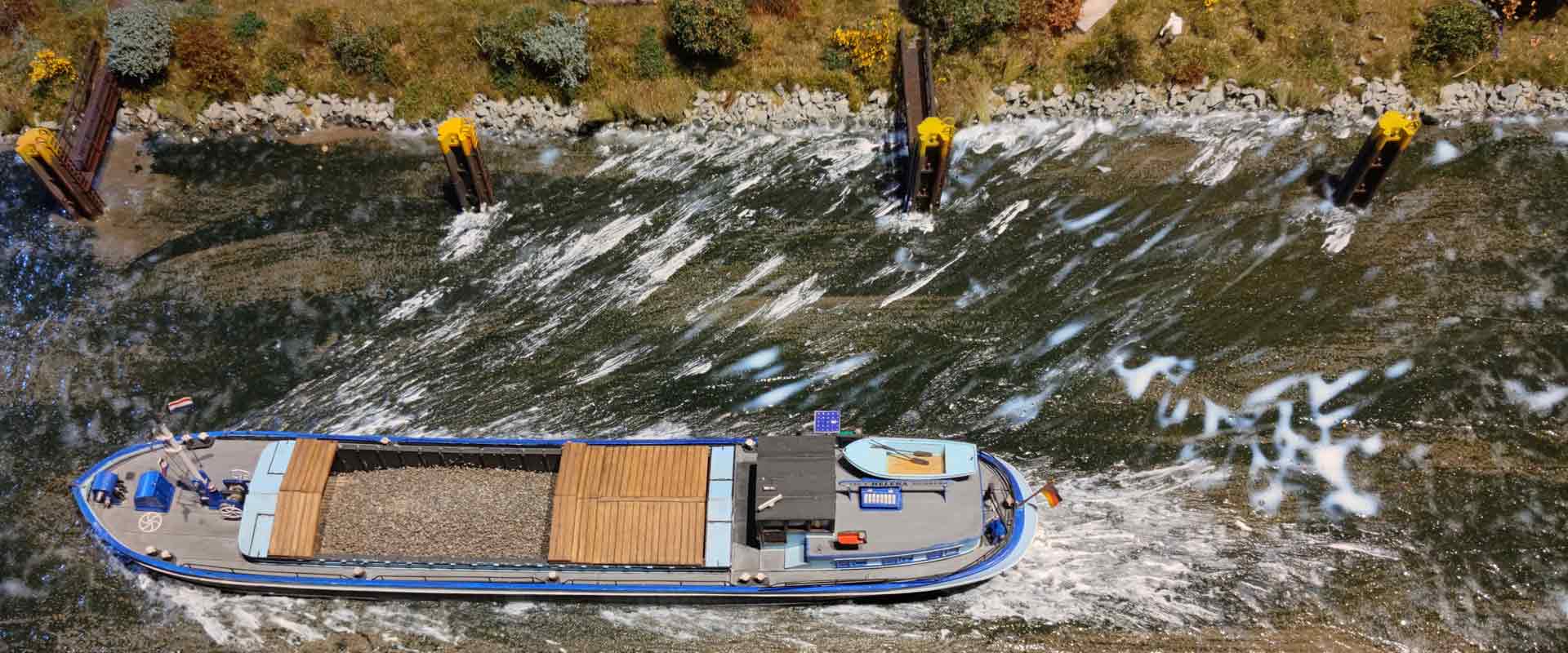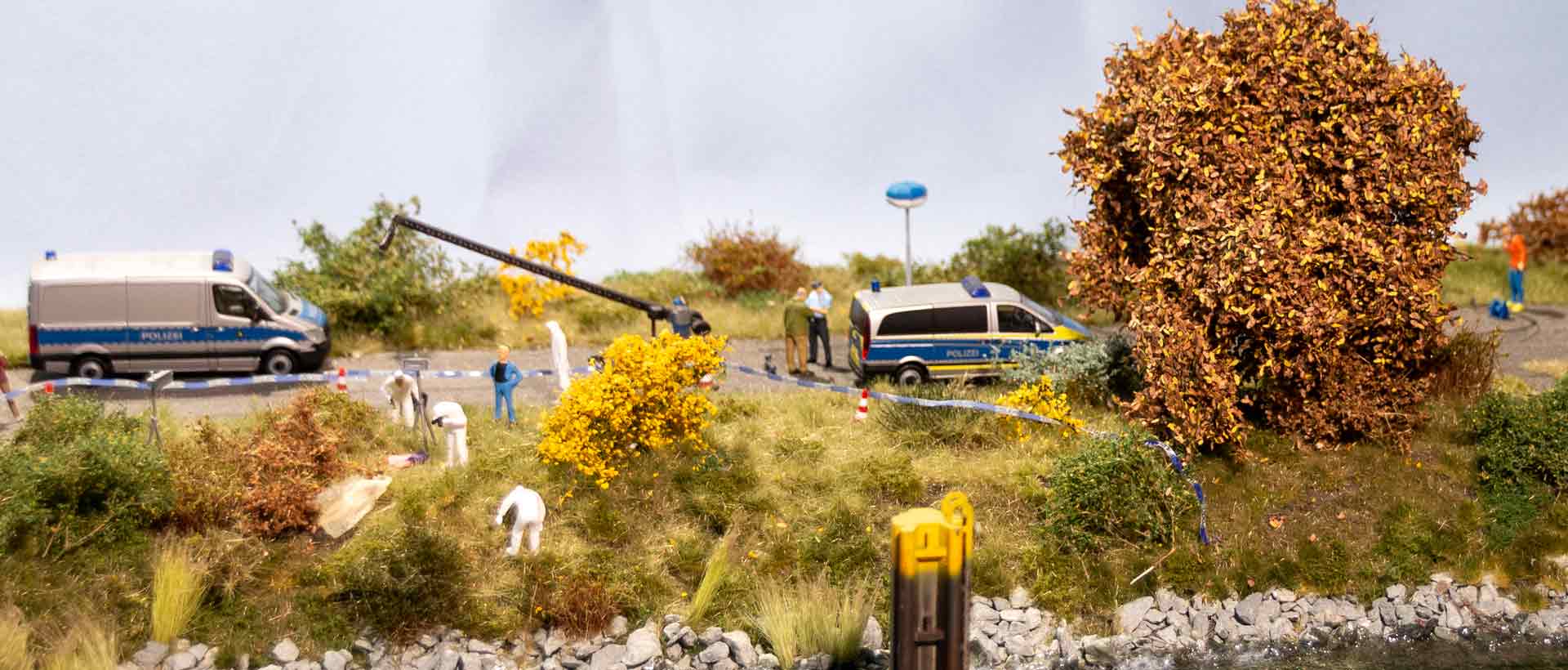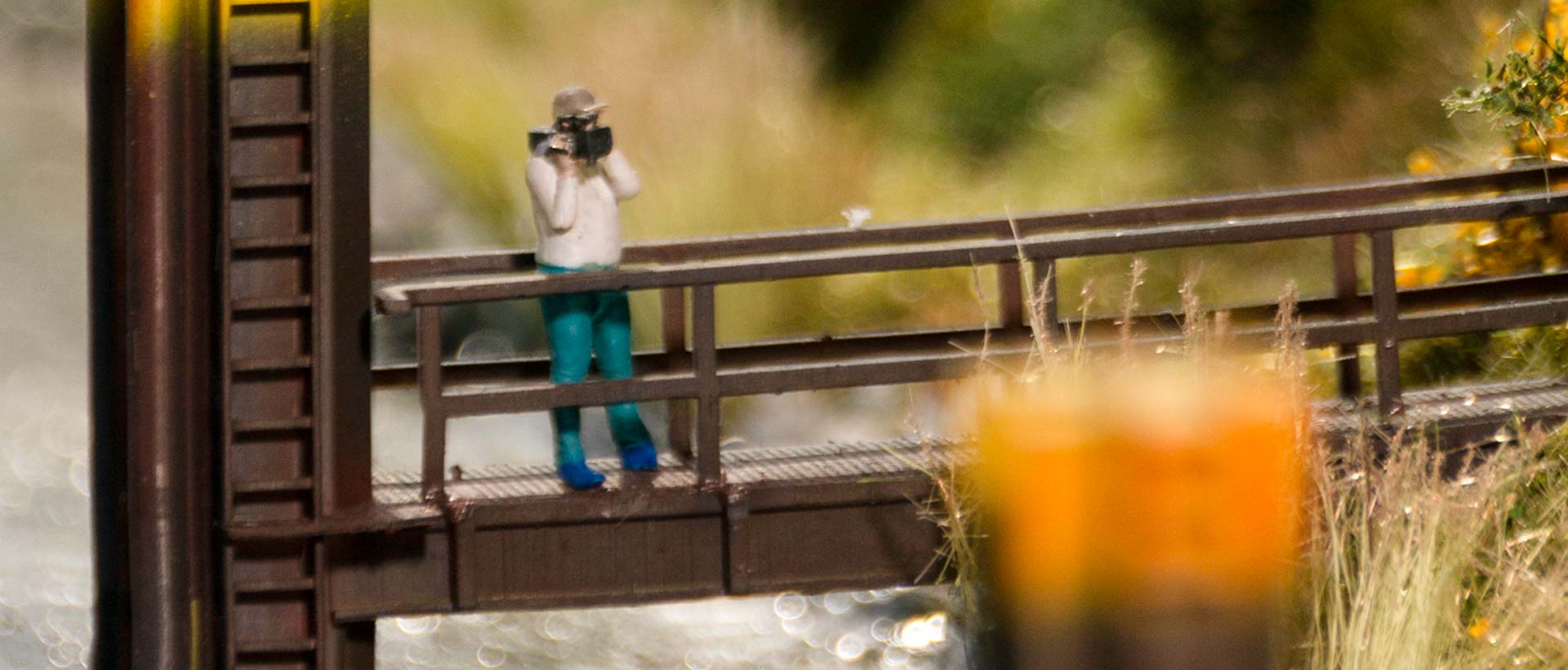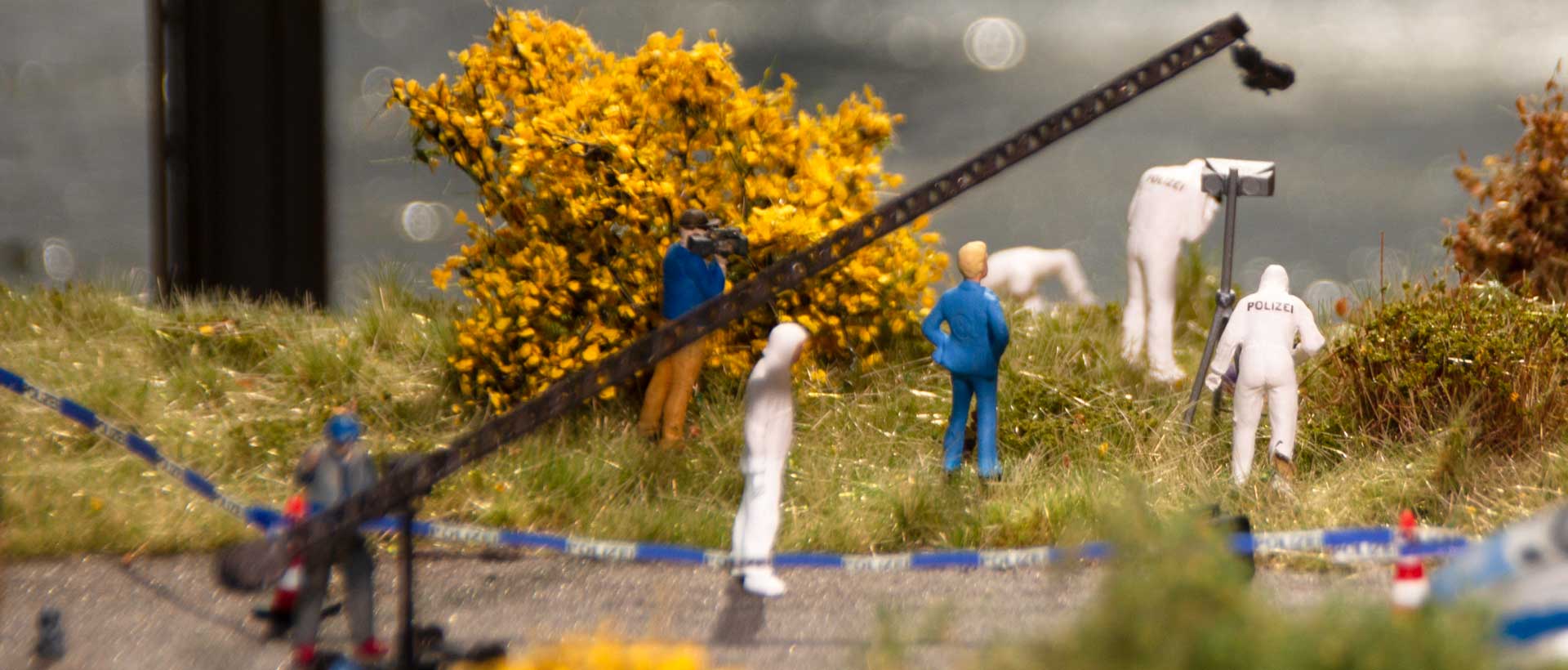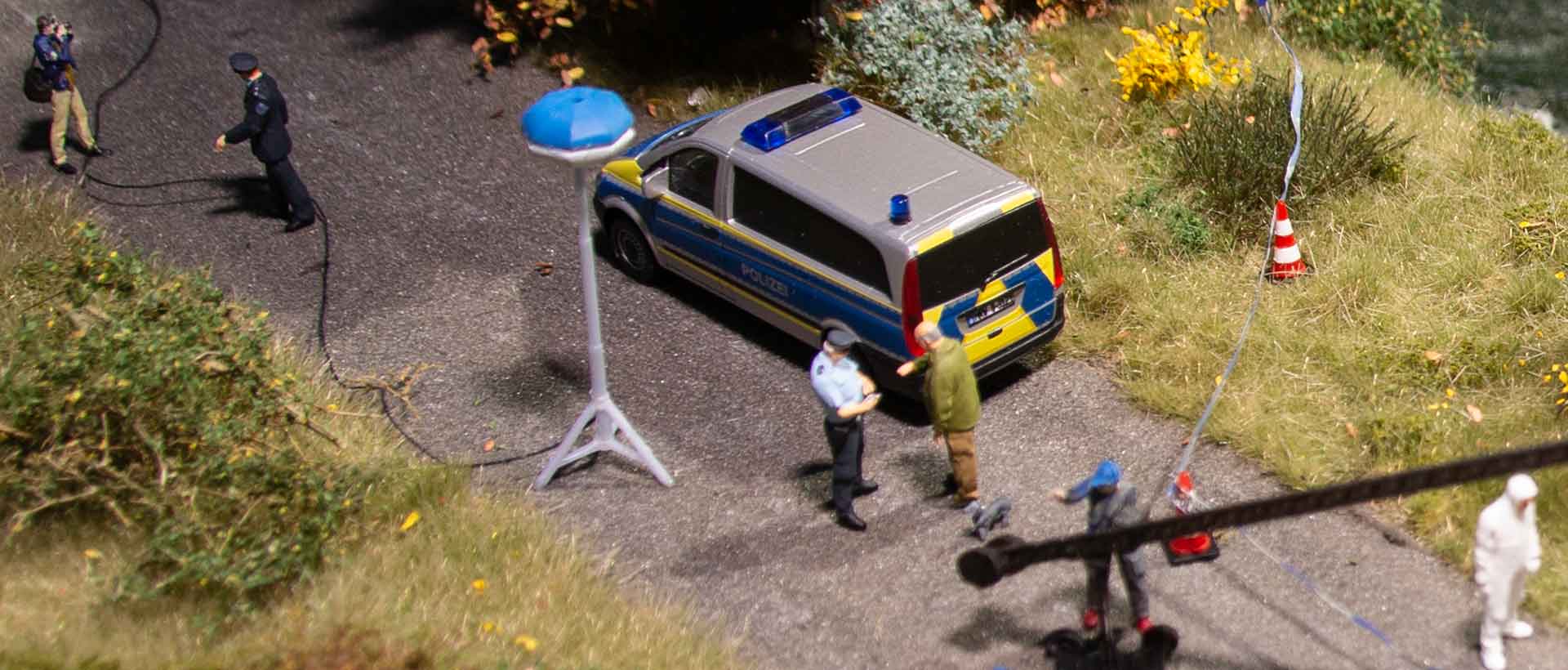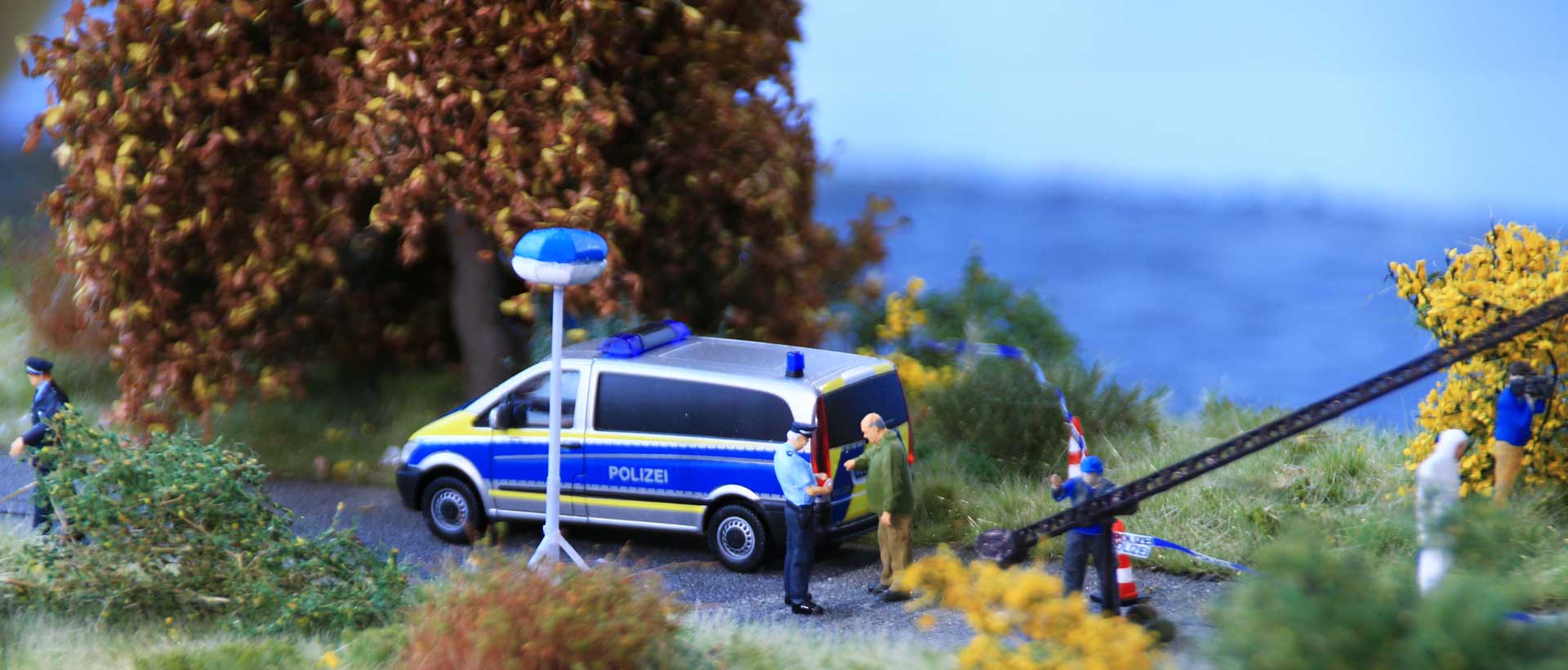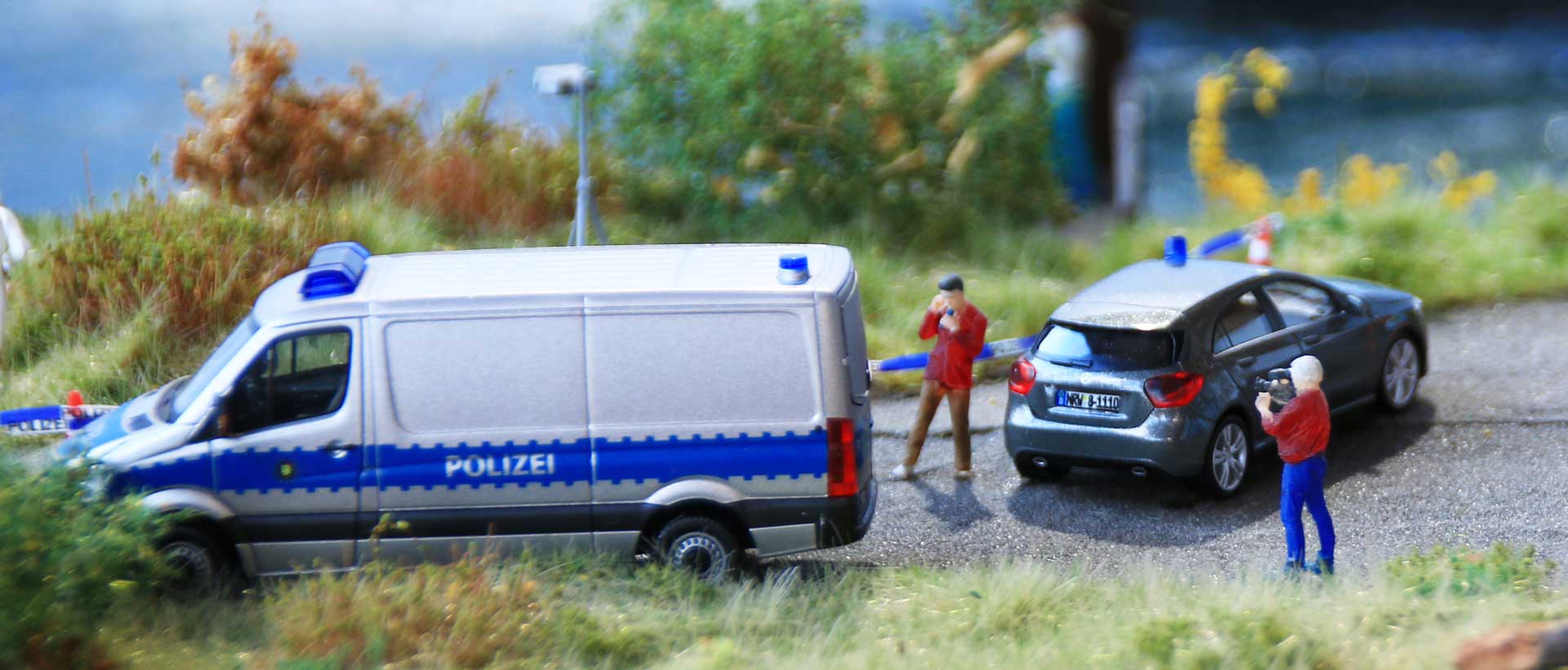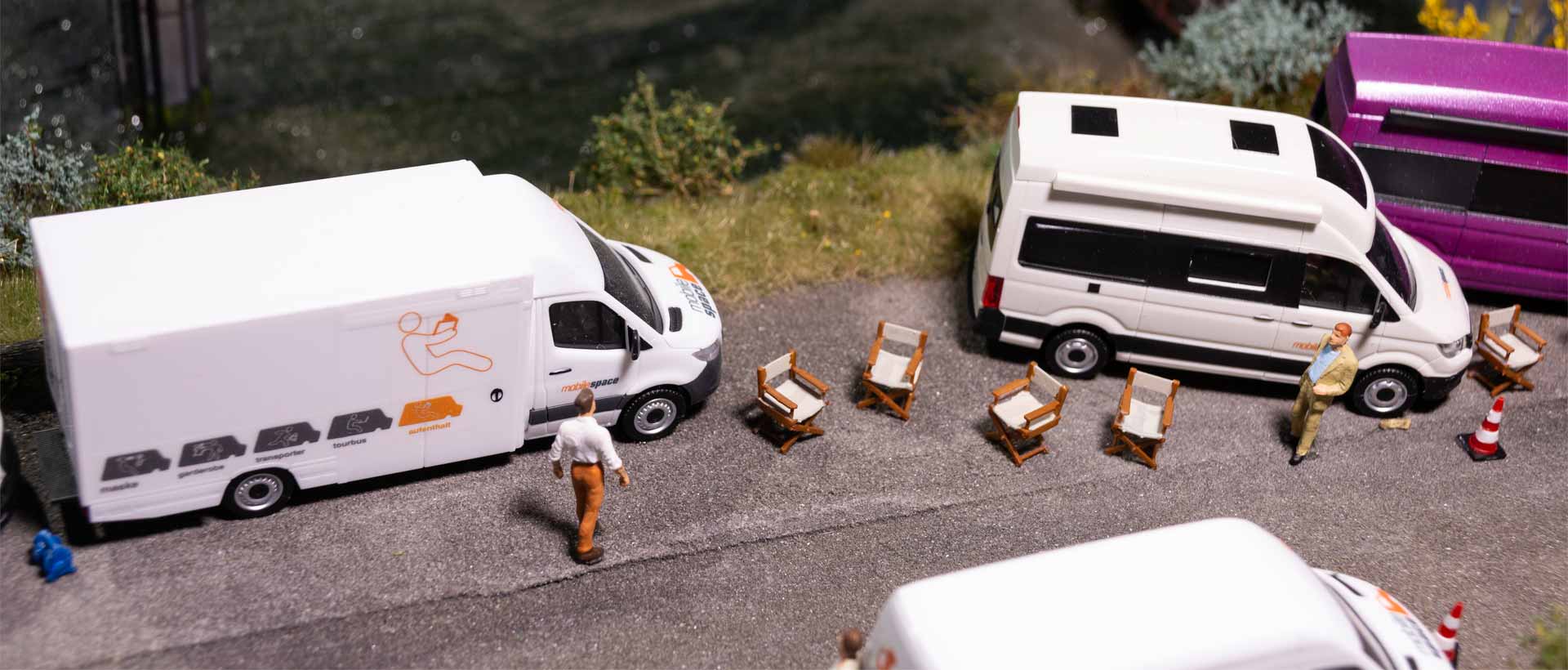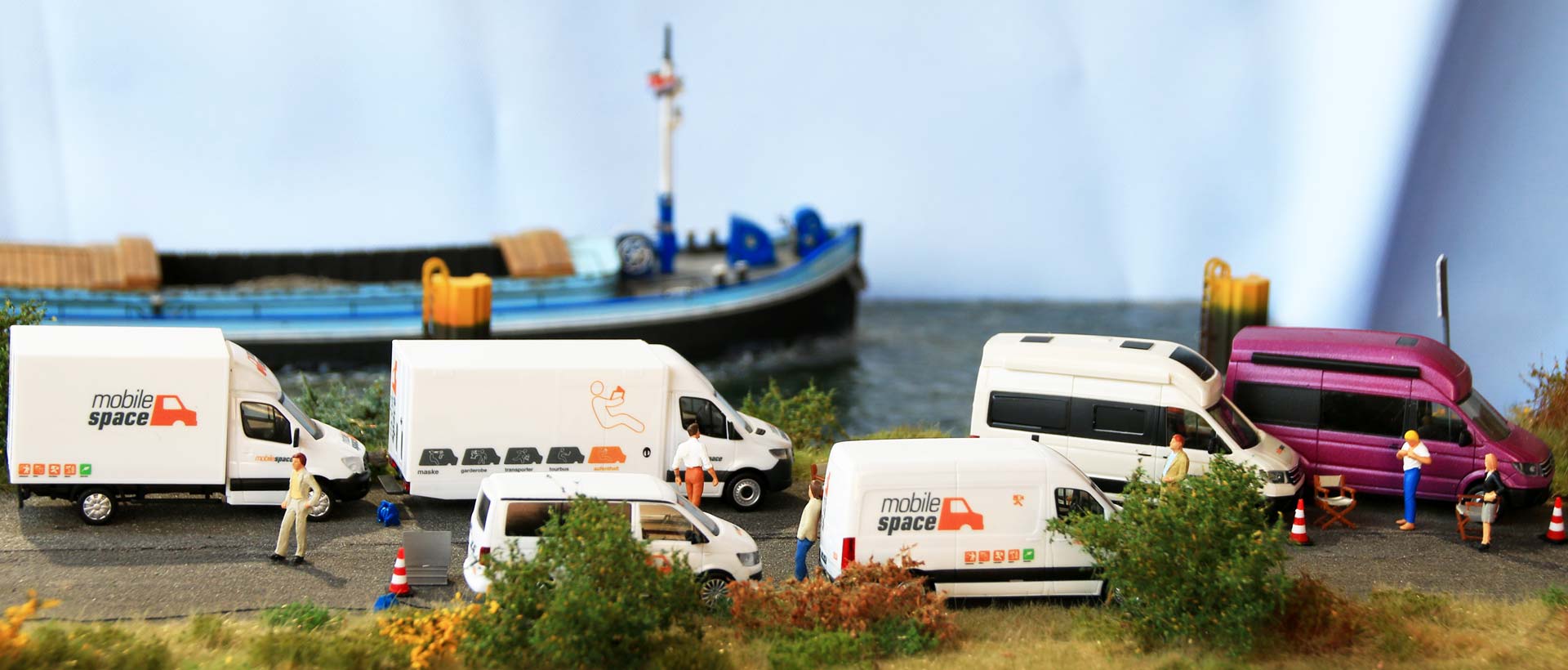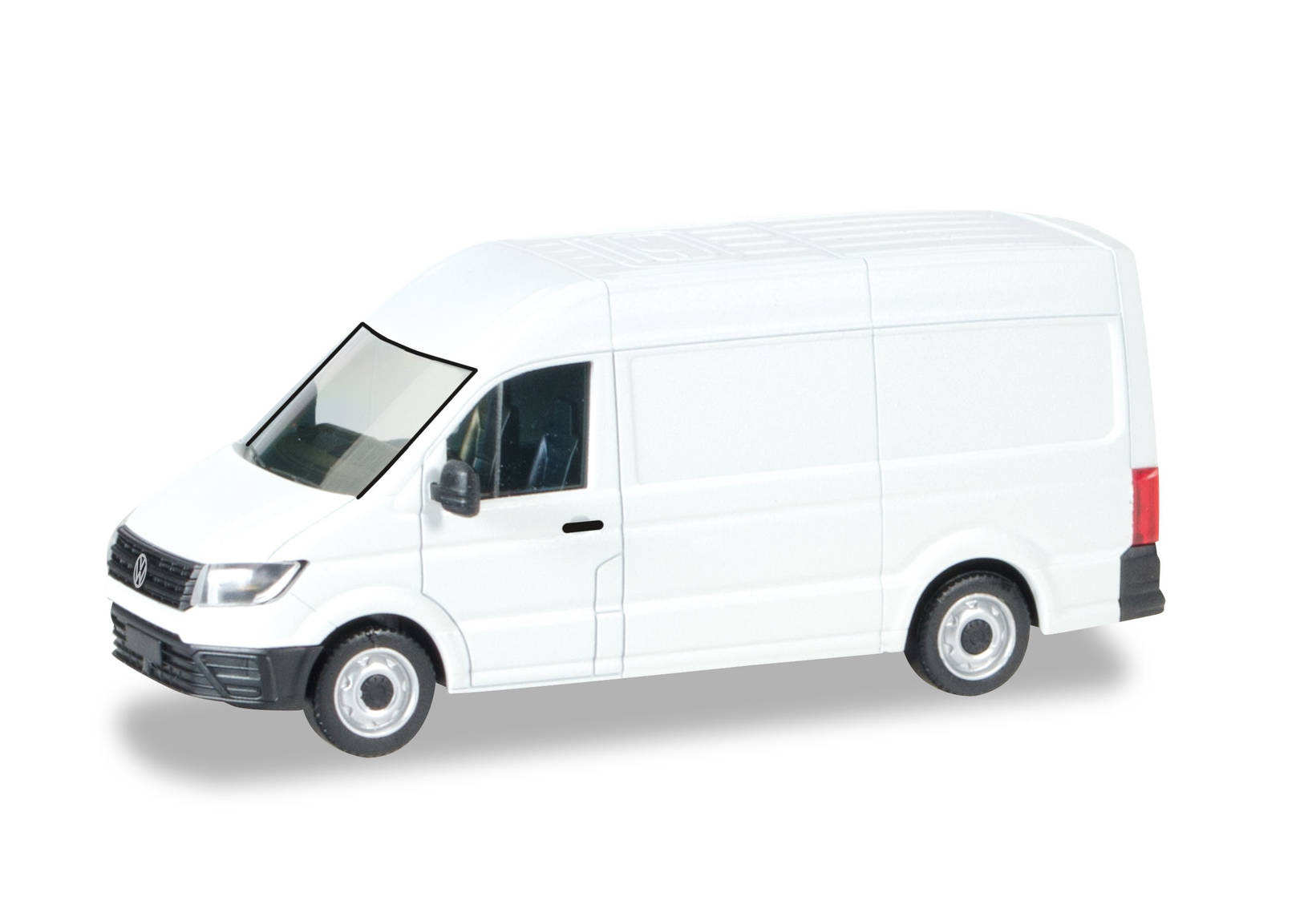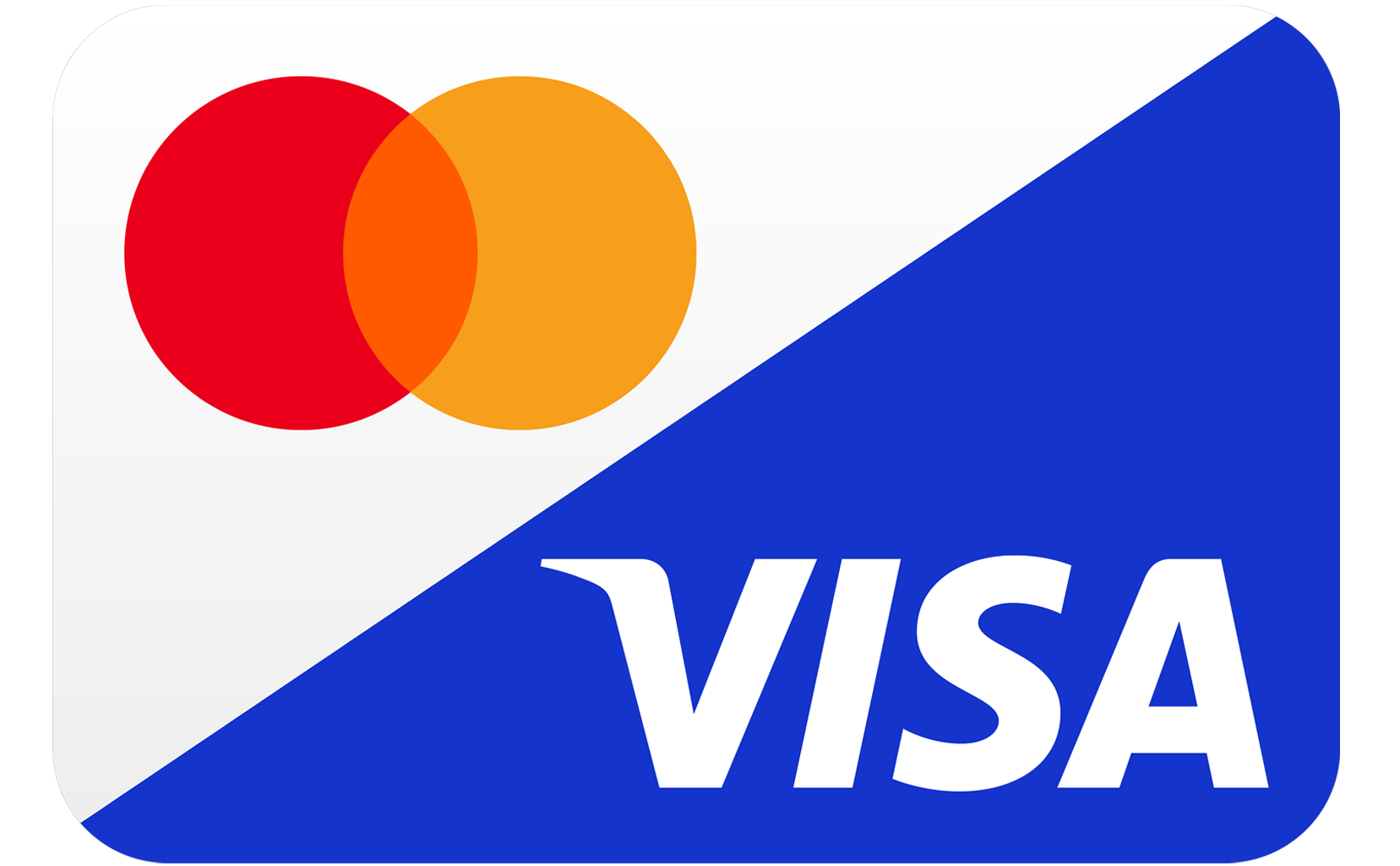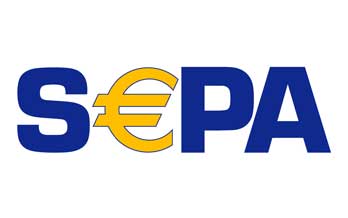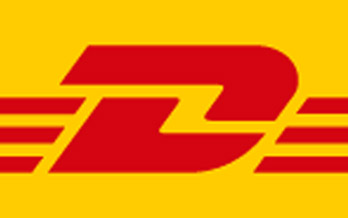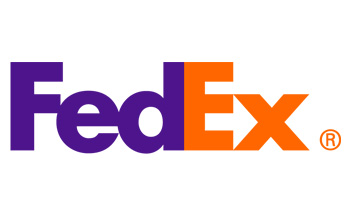Murder at the canal
New whodunits keep being filmed almost every day, and now, among other places, at the canal, where a murder has taken place. The team around inspector Schönemann is already busy collecting the facts and is actively supported by the forensics. Heinz Hofmann’s diorama not only presents the actual crime scene, but also provides a look behind the scenes of the film set.
Construction planning
The scene depicted in the diorama is a section of an inland waterway used by cargo ships. Typically, the Water Police (WSP) ensures law and order. The size of the showpiece is 90×47 cm and is to be integrated later into an existing canal and harbor landscape. The base plate is a 30 mm thick Styrodur plate, to which a 210 mm wide and also 30 mm thick Styrodur strip is glued on one side. The scenario is set today, i.e. in Epoch VI, as we say in Germany.
Preparation
Before building the diorama, the two ships are created first, which takes quite some time. The ship kits are the small cargo ship from Artitec and the police boat from mmh-Modellbau, which is a miniaturization of the WSP 15 “Datteln” that was retired from service a few years ago. The painting of the two model ships is done with AirbrushColor4you paints, which are applied with an “Infinity” airbrush. For a contemporary outfit, the cargo ship is equipped with a small radar as well as a blue panel (mmh-Modellbau). True to the original, the crew of the WSP 15 (from Preiser) is equipped with life jackets. Many photos of the original from the Internet are helpful for the correct realization, especially for the police boat; high-quality decals provide the right look. Some parts, like the dolphins, are 3D printed and painted true to the original.
Vehicles on the film set
Many film productions supplement their vehicle fleets with rental vehicles. Mobile Space from Hamburg is such a provider. The MiniKits from Herpa are ideal for the realistic representation of the original vehicles. Even beginners can assemble them without any special knowledge or tools. A list of the vehicles used can be found at www.mobilespace.de/en/rental/all-vehicles. The permission to use the logos and printable logo templates are provided by Mobile Space within a short time. The decals for this diorama are made to order by mmh-Modellbau. Mobile Space has its vehicles registered in Hamburg and Berlin. Therefore, all the replicas feature license plates from one of these two cities. To increase the adhesion of the UV-printed decals, Decal Fix from Vallejo is used. All police vehicles have authority license plates true to the original from North Rhine-Westphalia.
Figurines
To breathe life into the diorama, numerous miniature people are placed on it. Police officers, the forensics team, the actors, and some of the film crew are from Preiser’s range, while the victim of the murder is from Busch. All the camerapeople, on the other hand, were 3D printed in-house. The matching STL files can be found and purchased on the Internet, as well as the file for camera carriages with jibs. They are printed from resin on an Elegoo Saturn printer. After coloring, the figures with paints from AirbrushColor4you, camerapeople and photographers are available in different postures and can be placed in the diorama.
Further elements of decoration
The dolphins arranged in the canal, including those with connecting walkways, the small stairs adjoining them, the two Powermoons, the emergency power generators, the director’s chairs, and the cable drums are 3D resin parts from mmh-Modellbau. All parts have to be freed from the supporting framework and colored by yourself. For all decorative parts, the colors of AirbrushColor4you are used again, which are applied by airbrush or high-quality, fine brushes. The barrier tape used to cordon off the scene has been printed to order by mmh-Modellbau.
Landscaping
After the Styrodur panels that have been glued together have dried, the canal embankment can be roughly cut to size with a cutter knife. For this, the angle should be about 45 degrees. Then, the dolphins with the connecting bars are placed, and recesses are provided for them at the appropriate points in the area of the embankment. The stairs, which serve to safely overcome the difference in height from the footbridge to the road, will find their place in these. They are glued into the embankment; then, the three dolphins are fixed with the footbridges in the course of the canal and in the embankment. A long metal rail can be used to align them at the same distance. The canal bottom is then colored to avoid sharp colored edges on the bank. The natural embankment is now created by using texture paste, and the previously inserted stairs and connecting walkways are carefully modeled. Stones are used to represent the breakwaters and stabilize the embankment, as is the case with the original. RTS “Diabas gray 2–5 mm” is used, which is lightly washed. In the next step, the road along the canal is created using the “Asphalt” texture paste from Joker-Rügen. In order to achieve a good edging here, this is covered from the surrounding area with masking tape from the airbrush segment before the paste is applied. Immediately after applying the texture paste, the tape is carefully removed again.
Now, the remaining landscape is designed with texture pastes. In some places, real fine soil is added to the still wet paste to achieve an even more original representation of the soil. The first reed plants are now “planted” along the shore straight from the package into the shore area. Different grass and weed clumps as well as mini bushes are placed in such a way that you create partly a closed meadow area with different grasses and partly an open grass area. This work requires a lot of patience, but the later result rewards the effort. Also, the first small autumnal filigree bushes now find their intended place. Electrostatic flocking with 2-mm, 4-mm and 6-mm flakes is carried out selectively on the soil areas that are still free. These are applied with an RTS Greenkeeper 35 kV. In this way, a true-to-the-original vegetation of the grass areas is created. Additional filigree bushes and an autumnal deciduous tree round off the landscaping.
Designing the water
The base of the canal is painted with different water colors from Woodland. Everyone can freely implement his or her color ideas of a water surface here, because water surfaces look different in color at any time. For the diorama, a relatively dark color scheme is used. This will later shine through the “water application” and simulate depth. After that, the two prepared ships find their places in the canal and are fixed. The cargo ship passes by, while at the fictitious site of operation, the WSP 15 has been summoned. It turns in just enough to dock at a dolphin.
When designing the water, it is important to note that the previous layer must be thoroughly hardened or dried before applying further layers of the water texture pastes! First, the first coat is applied around the two moving ships. This creates waves and swirls generated by the ships. This is done with a small bristle brush and a shashlik spit. In the next step, “Water Gel Transparent” (AK) is dabbed on with a larger bristle brush as the first layer of water. In this step, the first waves of the ships are also modeled. This work must be repeated several times until the intended appearance of the water surface, including the waves, is achieved. Slight whitecaps, swirls, and waves are created after drying using an off-white paint.
Design of the scenes and finish
First, the victim is placed slightly hidden on the canal embankment. Around this, the forensic technicians as well as inspector Schönemann are positioned. The inspector’s assistant is standing by the civilian patrol car and is already investigating. At the patrol car, a police officer questions the witness who found the victim. Another policeman tries to stop an overly curious member of the press from taking pictures. Various camerapeople record the scene from different locations. Other actors and some members of the film crew stay by the parked Mobile Space vehicles, waiting for their turn. The scene is cordoned off with barrier tape. Two Powermoons provide the necessary light for the filming as darkness falls. Some traffic cones secure the parked vehicles of the film company, others serve to attach the barrier tape.
Model making, text, and photos: Heinz Hofmann
Materials used
Airbrush4you: colors www.airbrush4you.de
AK: soil paste, water structure paste www.ak-interactive.com
DIY store: Styrodur plate 30 mm
Busch: Bushes, shrubs, tree, and figure www.Busch-model.com
Eigener 3D-Druck: Cameraarm
Joker: structure paste for road surface www.joker-ruegen.de
Lars op’t Hof: grass tufts, bushes, and shrubs www.larsopthof.nl
Mininatur: bushes and shrubs www.mininatur.de
mmh-Modellbau: dolphins, connecting walkways, police boat WSP 15, Powermoon, cable drums, director chairs, police barrier tape, steps, and decals “mobile Space” www.mmh-modellbau.de
Preiser: figurines www.preiserfiguren.de
RTS: soil paste, real soil, tufts of grass, bushes, shrubs, embankment rocks, and Elektrostat 35 kV www.rts-greenkeeper.de
Woodland: reed tufts, colors, and imitation waves www.woodlandscenics.com


